Resting Academy Weekly
By Poornima Nair
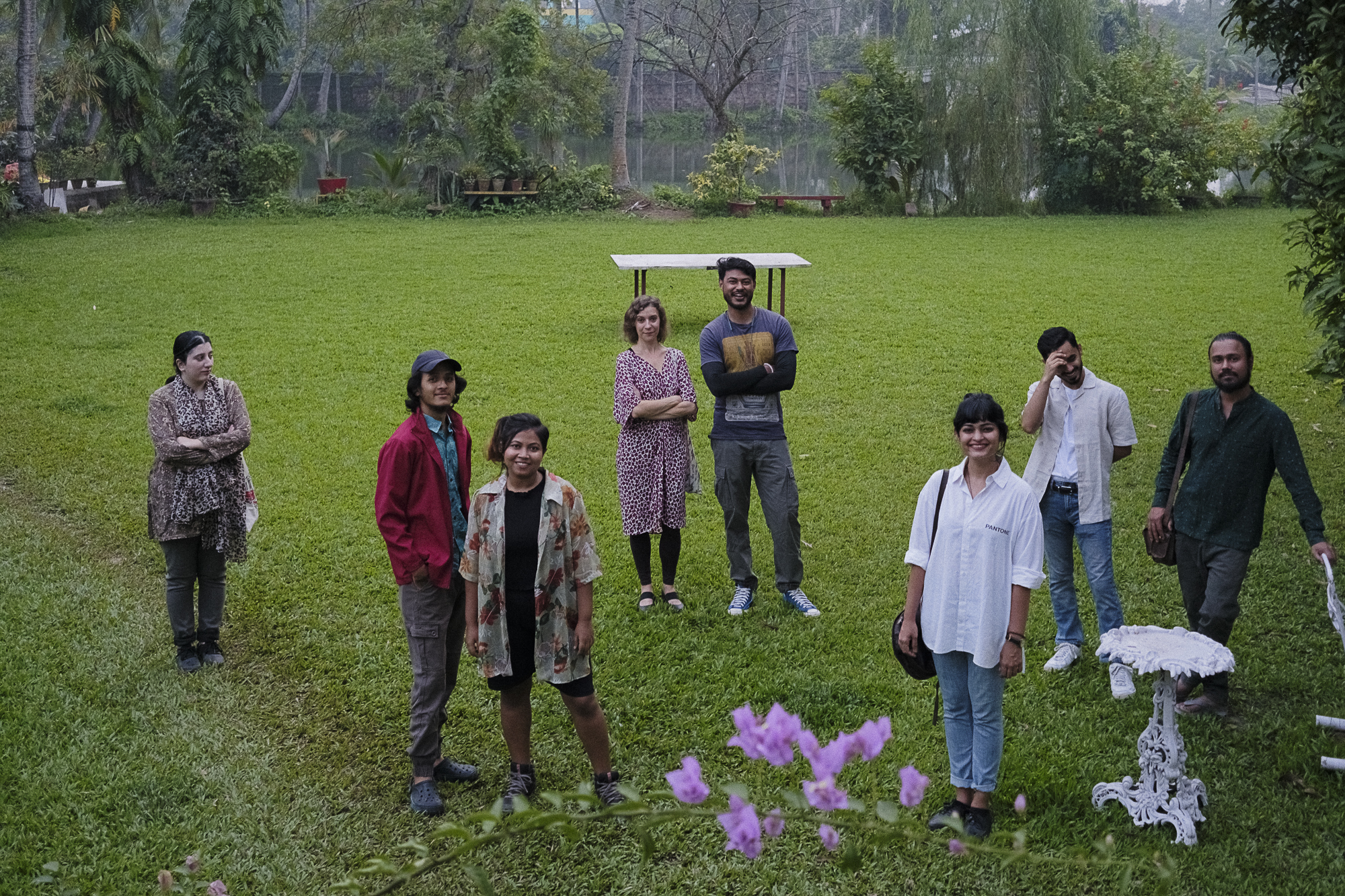

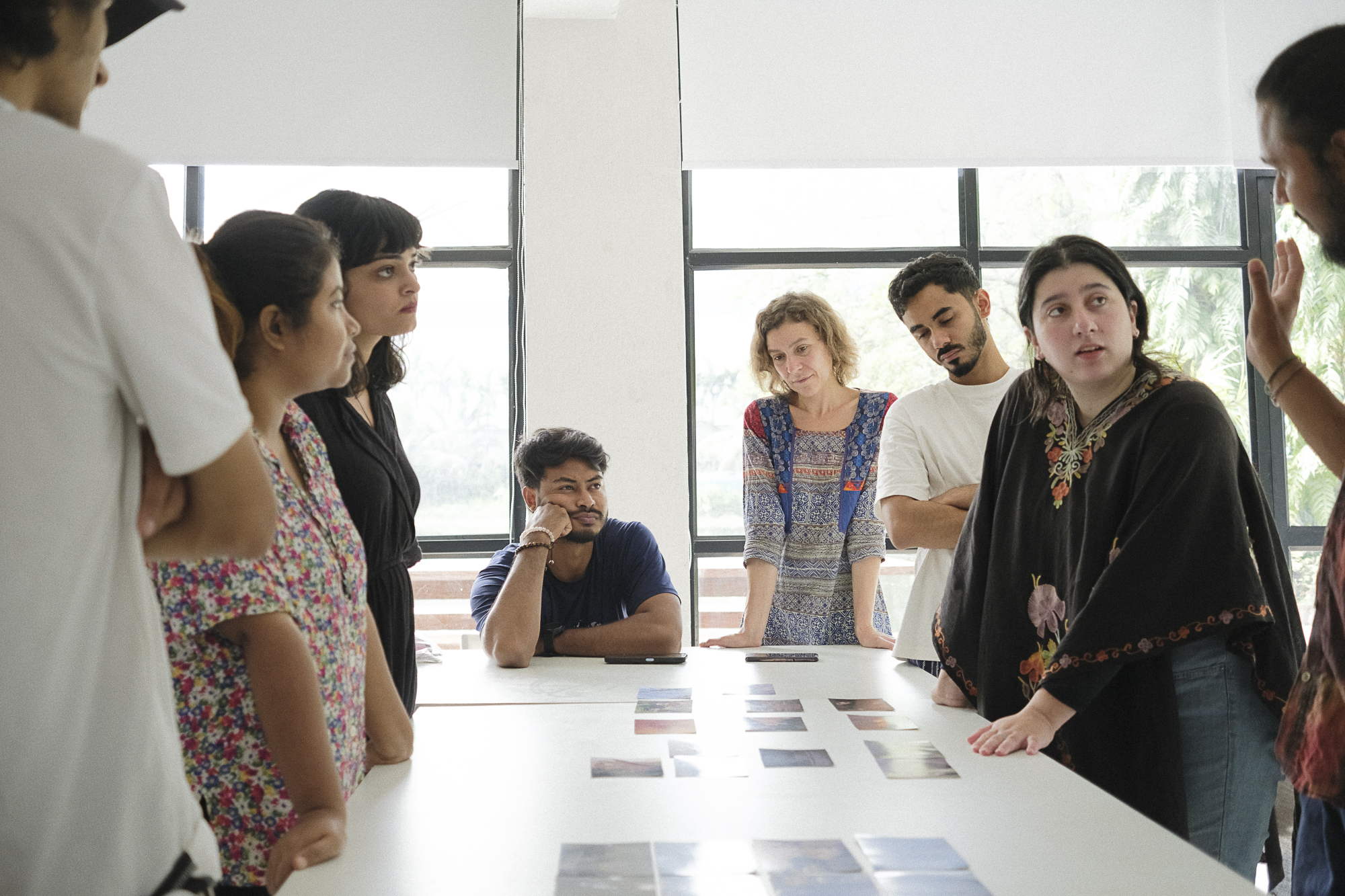
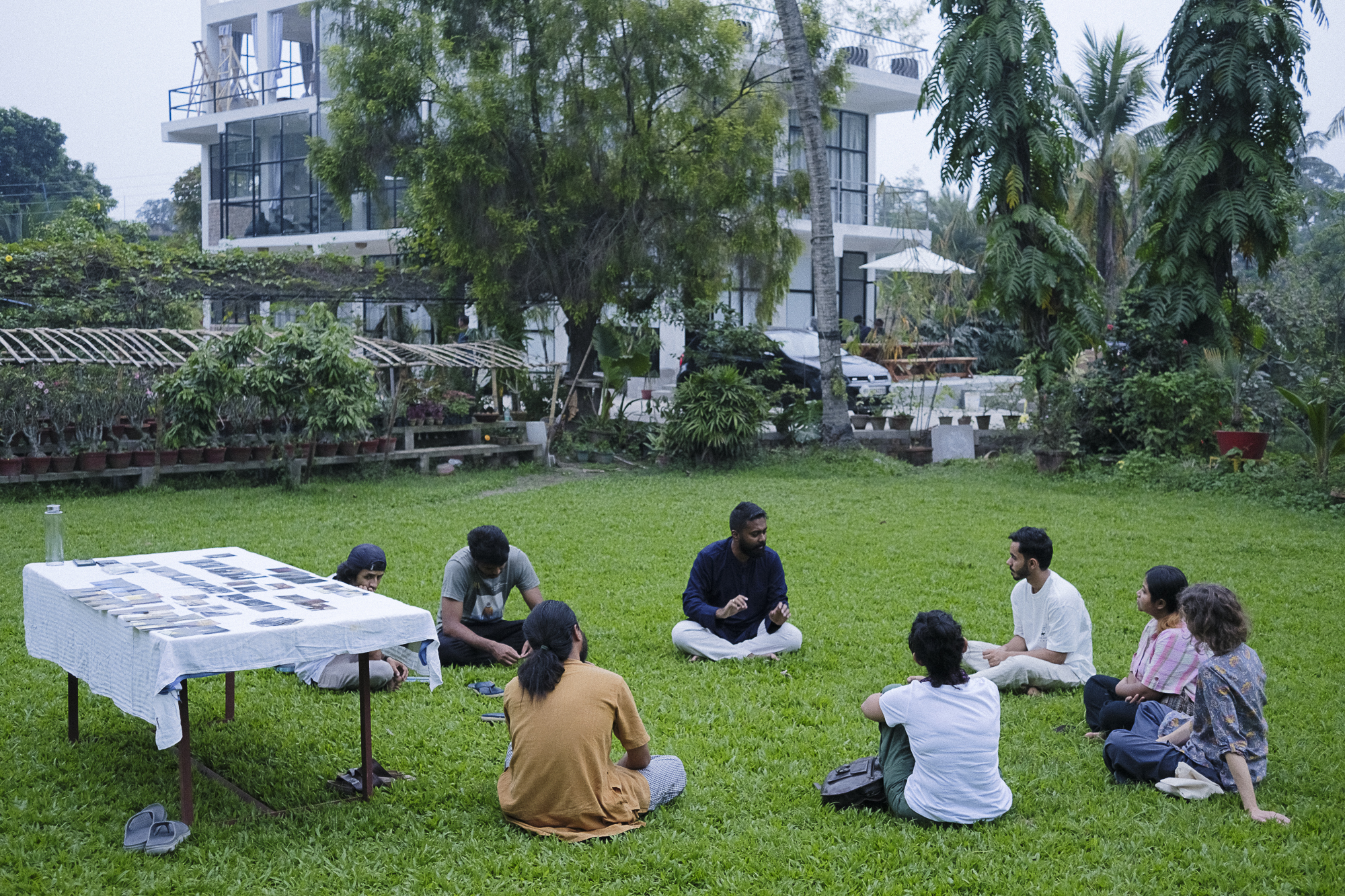
Excitement, fear, doubt, joy, crisis, hope- were all capsulated like articles of clothing that we stacked into our bags. Our outlines were as stiff as the hard shell of the suitcases we carried with us. Life in its portable form- neatly packed and wrapped, we each made our way to Kolkata to be a part of Resting Academy, like streams that eventually joined the still river. It was an entirely new landscape, language and for some even country.
Our first real introduction was made with grids of photographs that vividly described who we are and how we see, The white table – our dialogue box. Many conversations took shape in the same room in the days that followed while the table continued to speak for us- telling our stories in its most honest form.
It is said that our bodies respond to fear and excitement the same way, perhaps what we all felt was an amplified version of the two, interchangeable and independent. In the days that followed, we each found spaces that we took comfort in, one such space that we were collectively drawn to was the pond in front of Anandi Bari. We were told the ponds in Bengal can be dangerously deep and yet how we each took to the water was a little spectacle of its own kind. Not all of us knew how to swim, neither were we accurately aware of the depth, and yet we chose to float. Trust that the same water that could drown us would also hold us. And for now, that was all we needed to know.
Photography And.
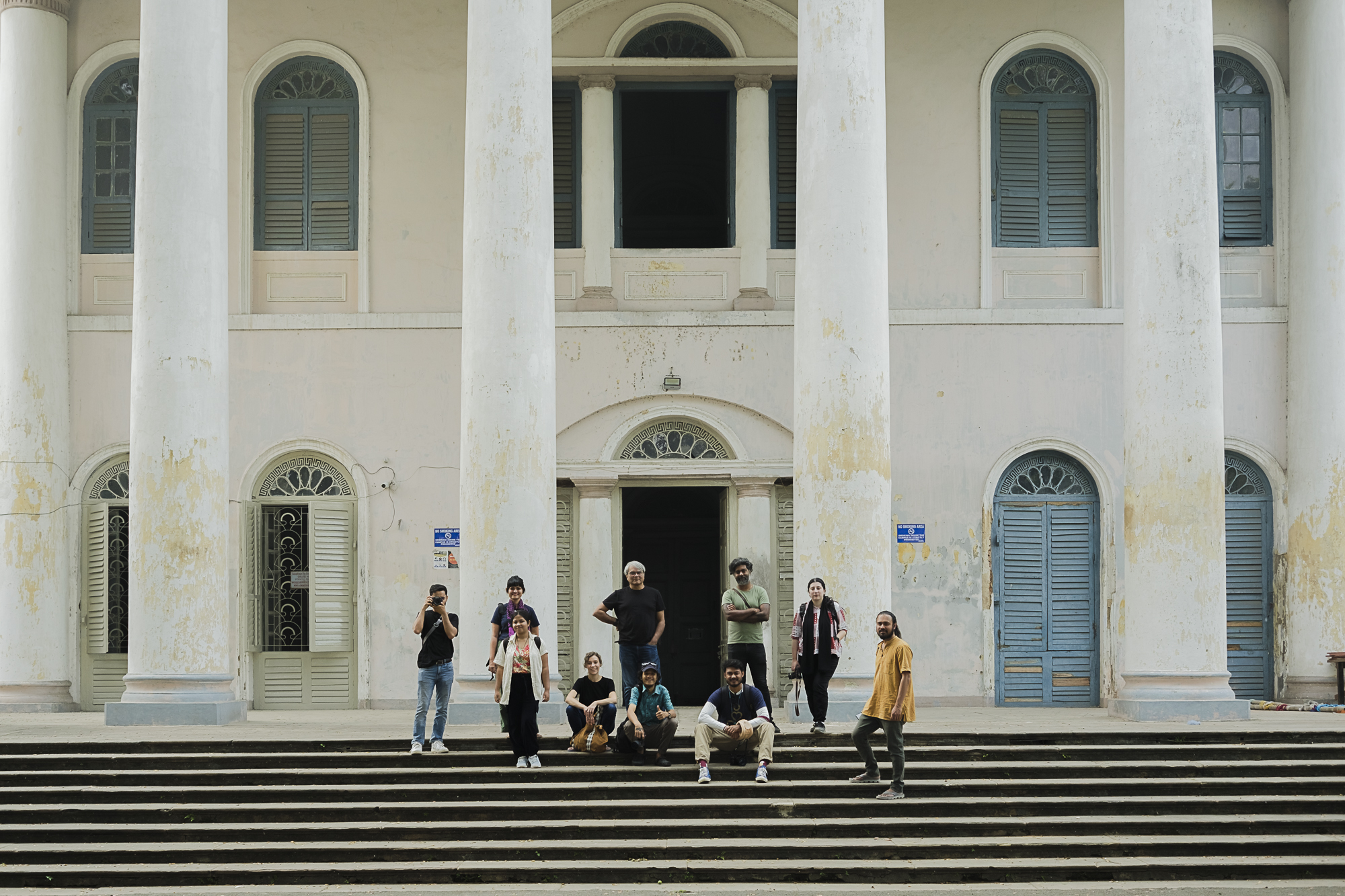

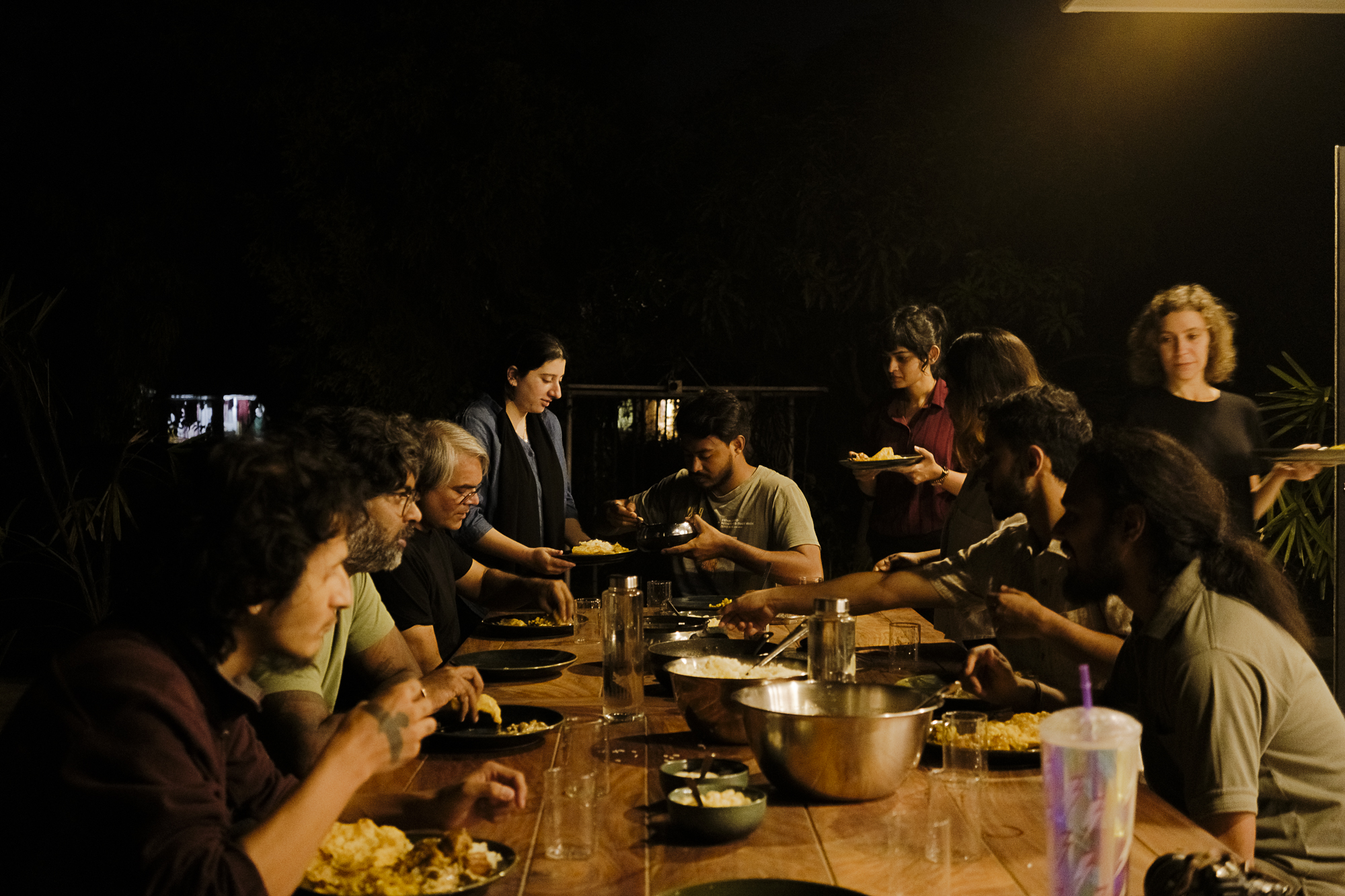


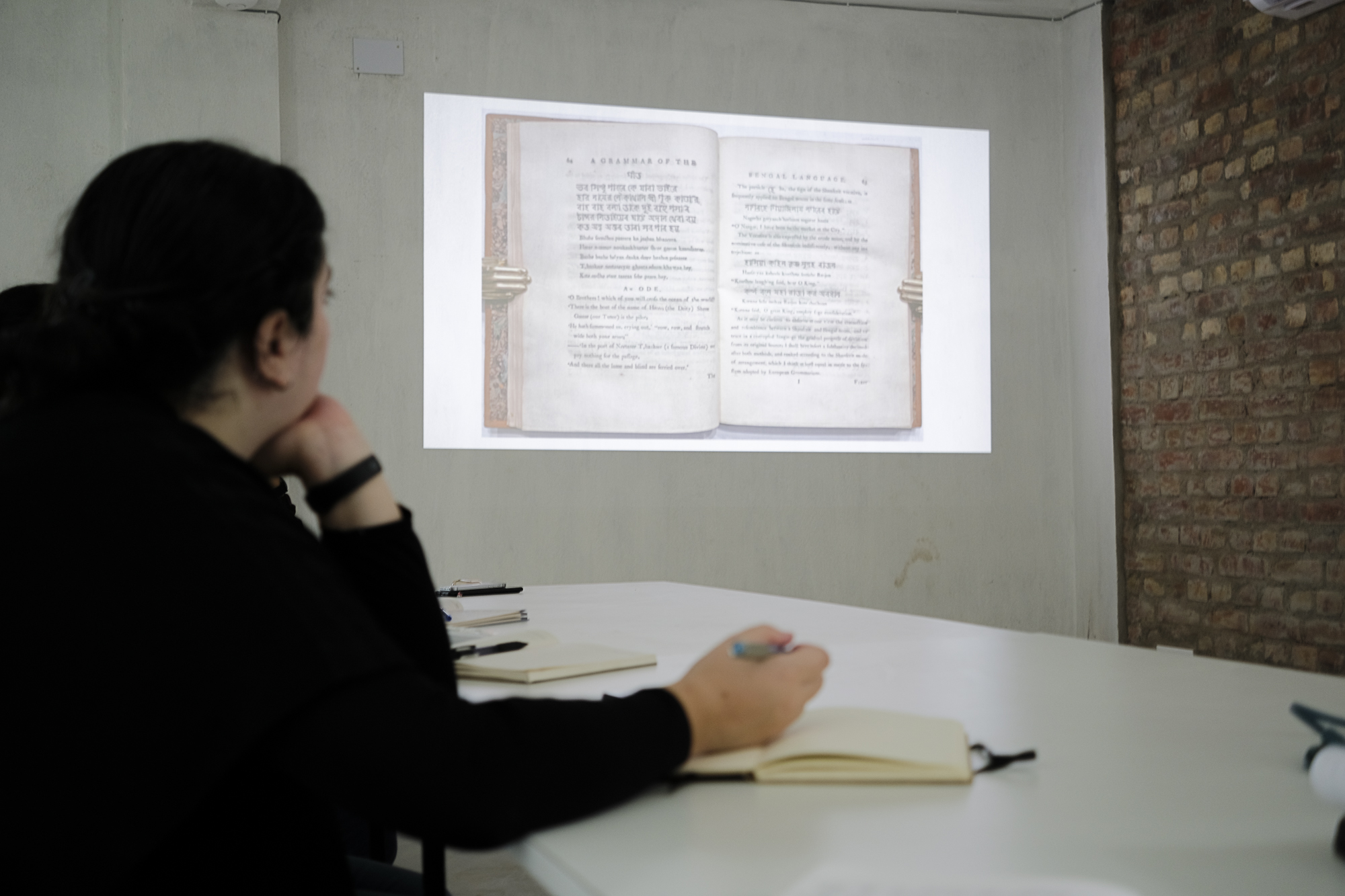
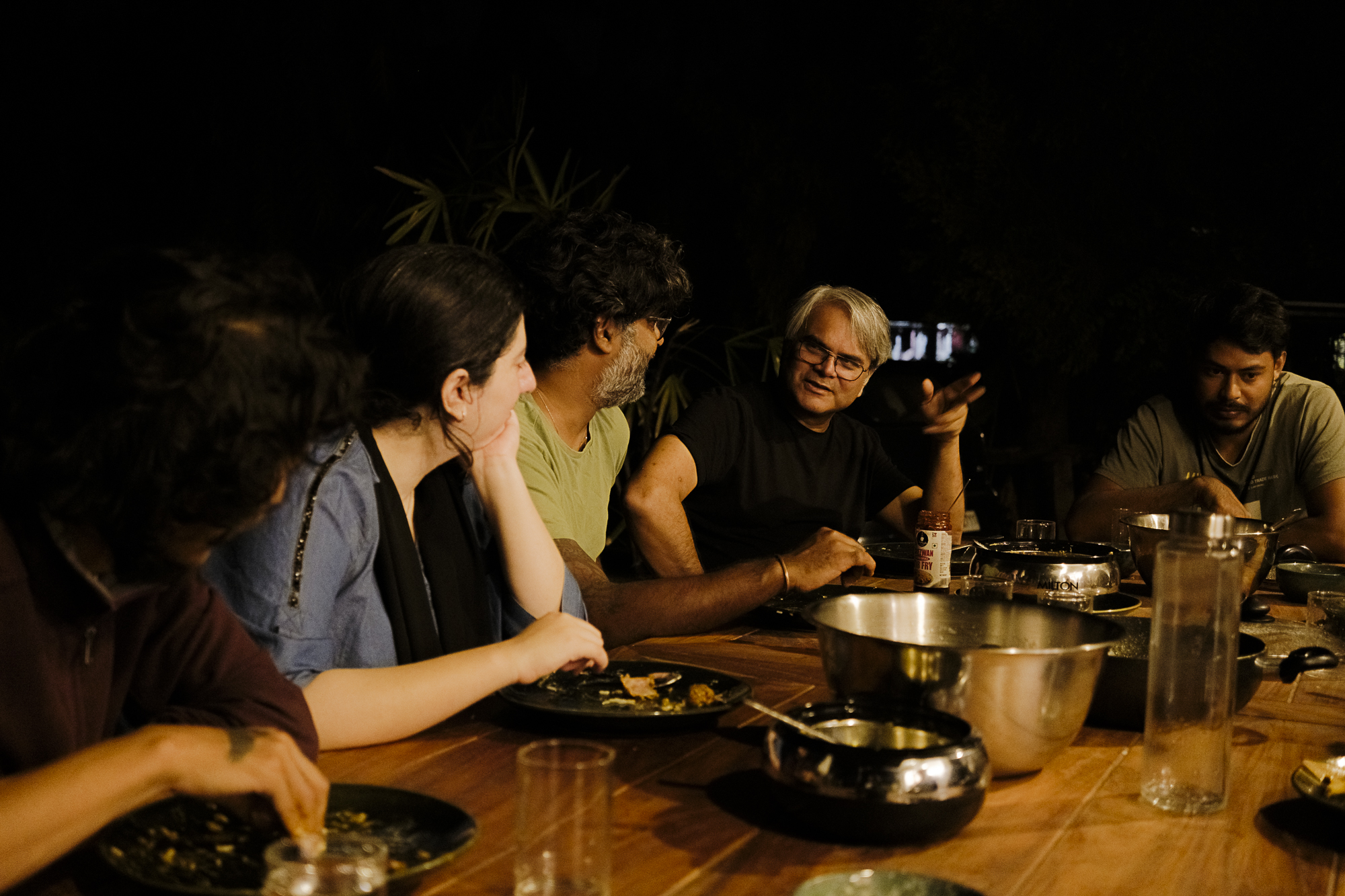


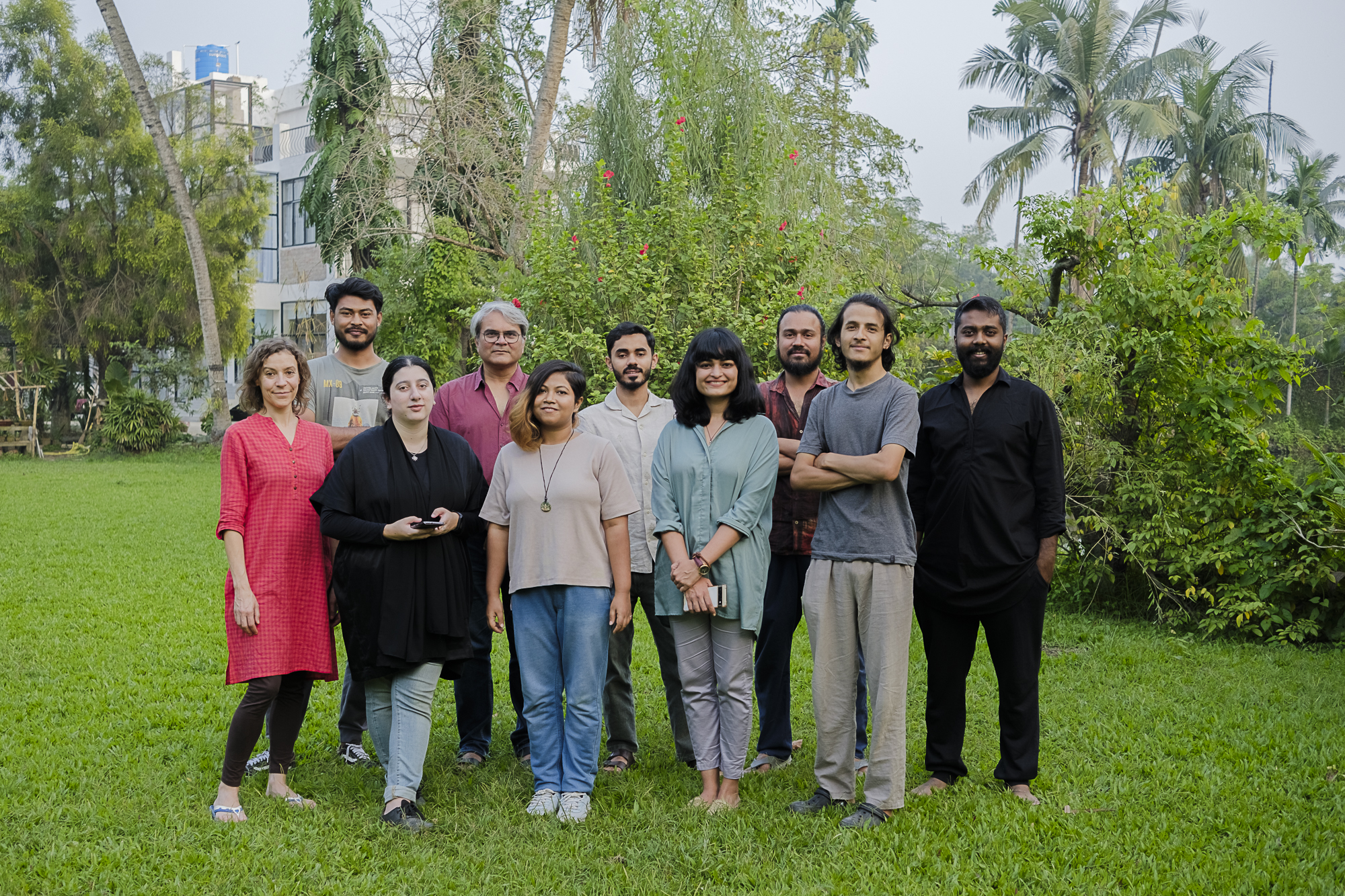
“Do you remember taking your first photograph?”, Shuddha asked us, setting the premise for what was about to be a week-long journey that explored the significant nodes of photography, its intimate relationship with death, memory, research and time. The question held much weight and our answers revealed not just our memory itself but also how we chose to remember the things we do, the details we retained from our own personal history.
History changes with its many retellings, the versions we remember are the ones that come not only from a space of knowledge but also that of wisdom. Shuddha in many ways personified an archive - books tightly bound with words, images and exceptional stories, one with many earmarked pages. The mechanics of memory is often strange, kaleidoscopic, every shift brings together an entirely new image made of the same matter in different form. Both abstract and definite, reliable and unreliable.
The picnic table was one such composite of many mental photographs. It brings back many things at once- the meaning of our names, that of Bengali music, our first dinner together, the flowers that Tagore carefully named and perhaps even a Jenny Kutty waiting her turn outside a P.C.O booth, holding the exact change to call home.
Memory has a definite bias- to the people, spaces and the conversations that change us, shape us. It is with this that even the forgetful can be sure to remember not just the week that went by but also the person that stood like a keystone, holding it all together.
Listening as a Way of Feeling and Knowing

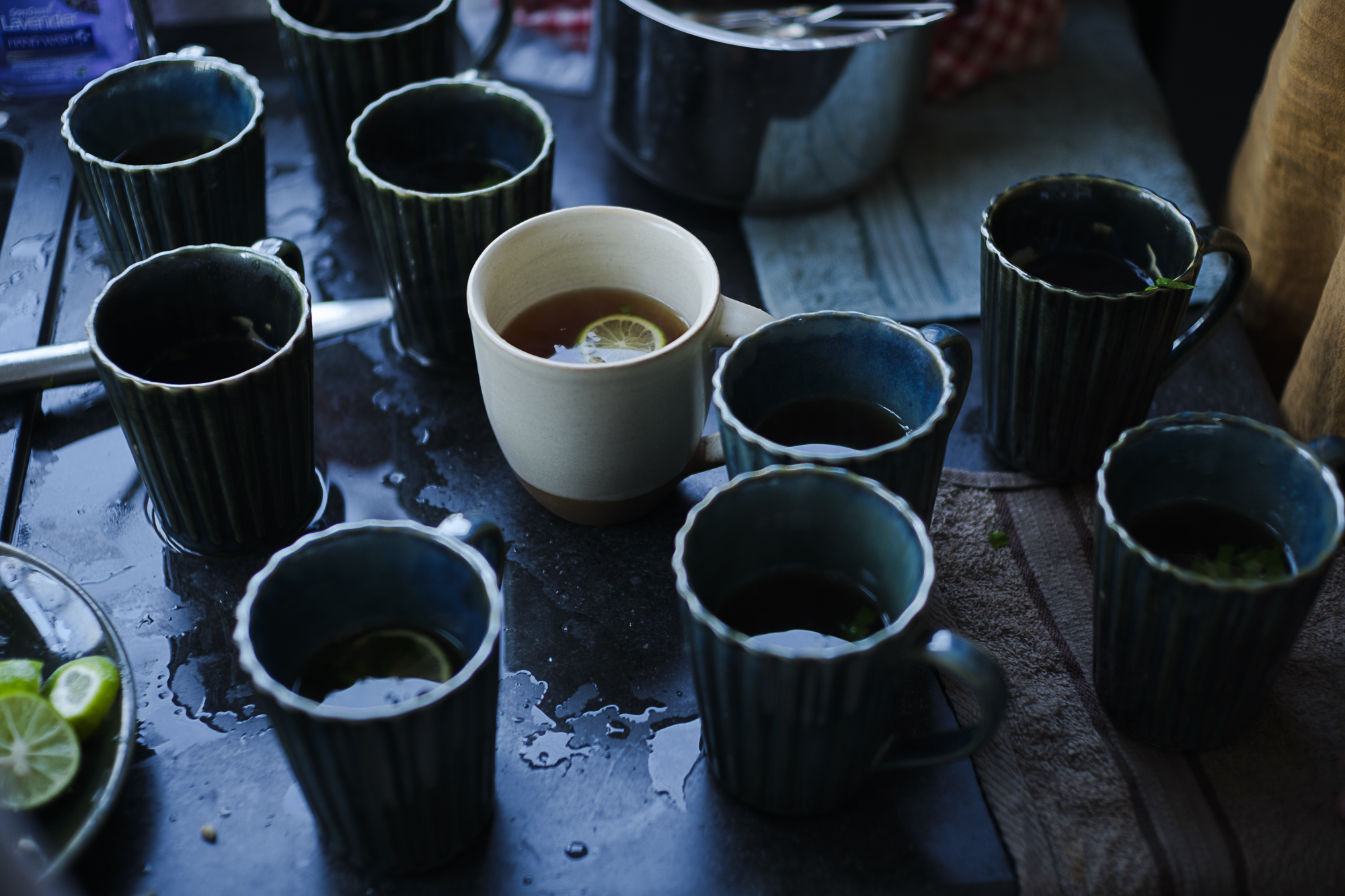



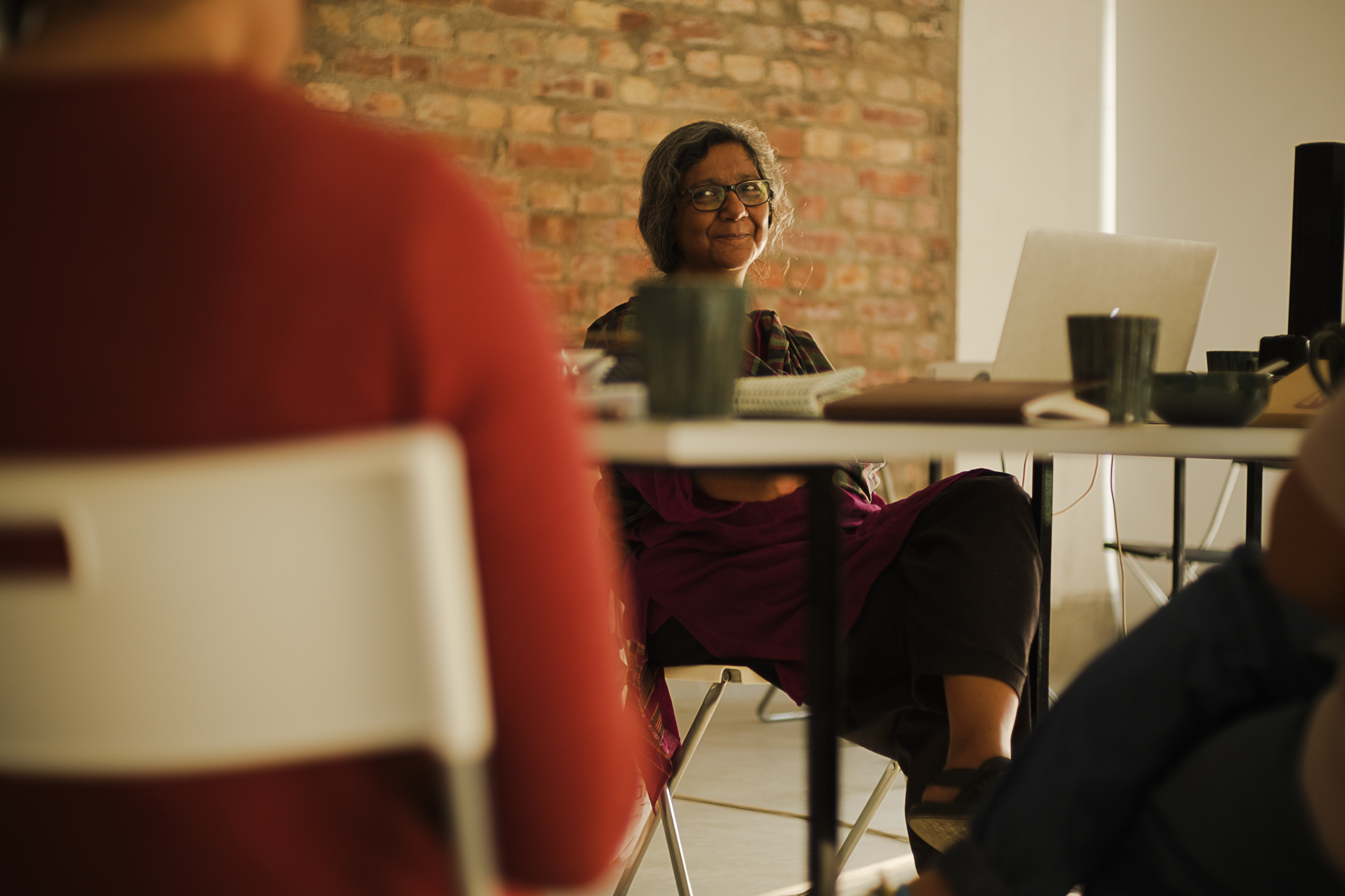


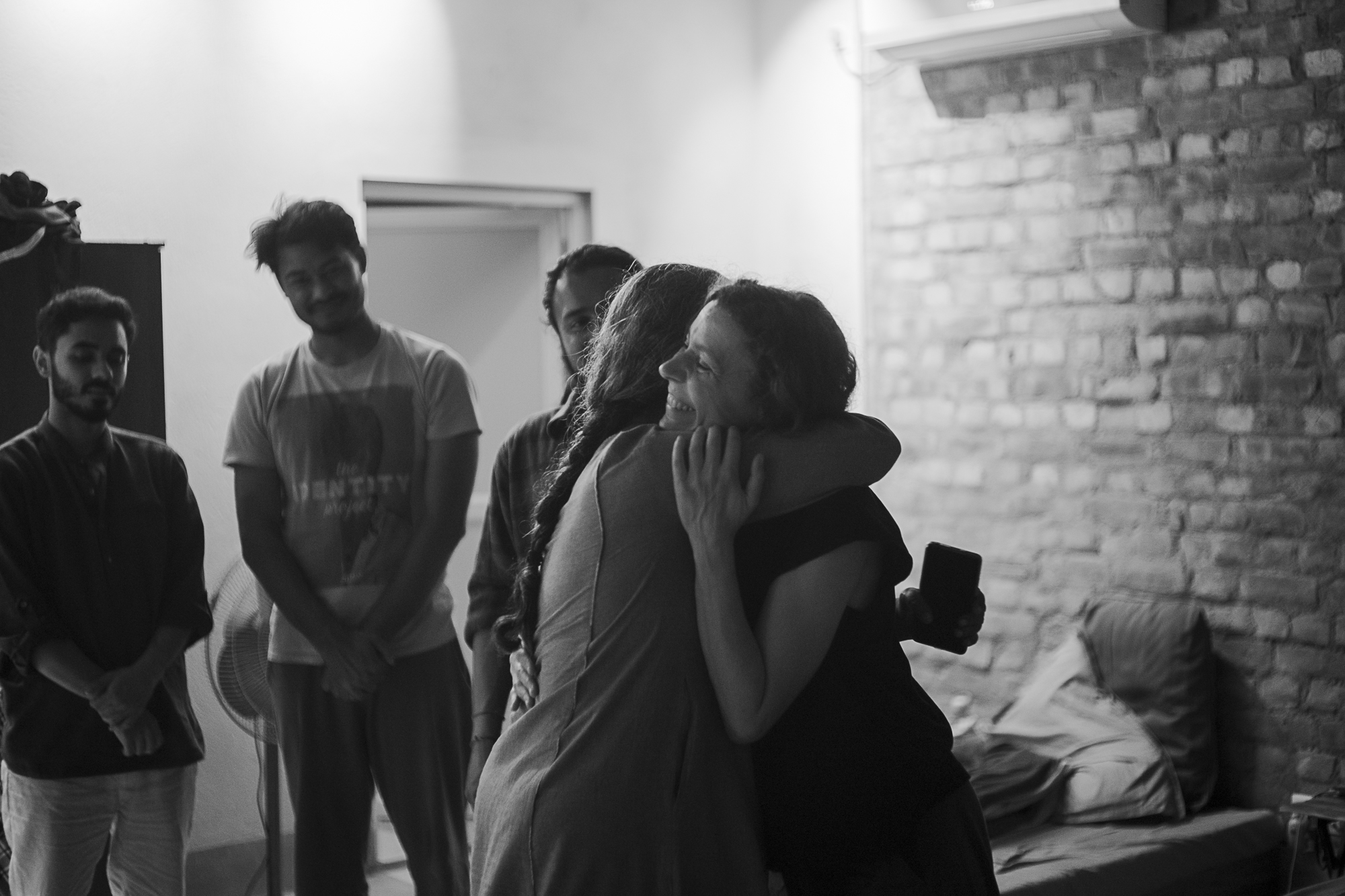

We are all made of Broken maps- of experiences, events and memory. Like the Japanese artform Kintsugi, our sonic memory pulsates through the thin veins of gold and holds together what is broken. Moushamidi started her session on a high note by asking each of us to play a sound that reminded us of home- it was perhaps the first time in three weeks that some of us felt homesick, also the first time that we fully experienced the power of sound and its omnipresence.
There is an undeniable grief in remembering sound, its intricacies – Intangible, indescribable. Sound is the cue our memory needs to bring together its own curated visuals, surprising ourselves with what we feel within what we remember.
In the week that progressed, we developed an acute sensitivity to sound, understood sound in means of taking space, to realize that the leaf that created a ripple also created a sound. Of the many unspoken lessons we take back from Moushamidi, the one we shall most remember is that it takes a strong inner compass to navigate these broken maps; to look outside of ourselves is as much a part of the process as looking within, and it is in doing this that what is golden shines through.
Vision as word

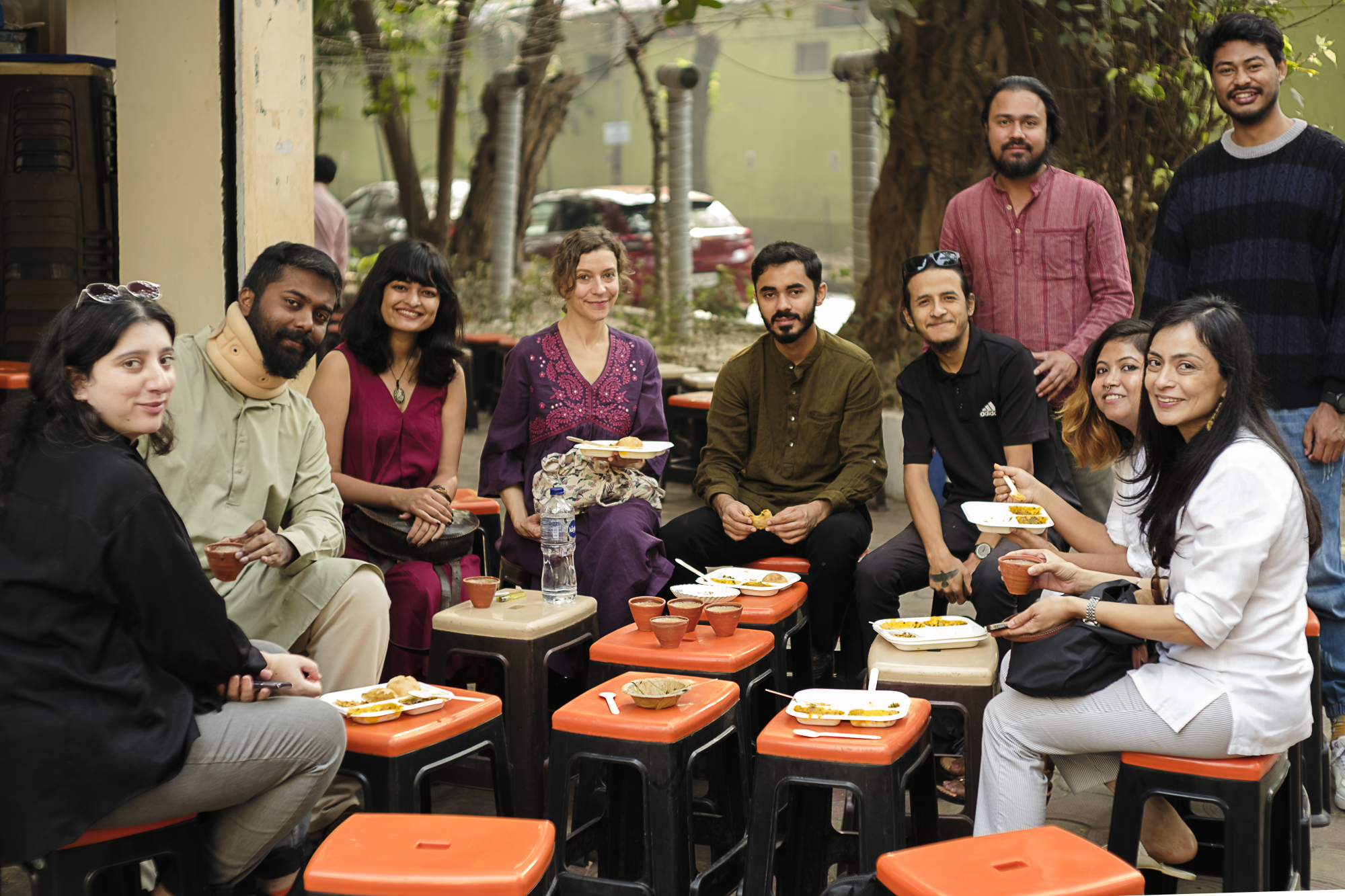
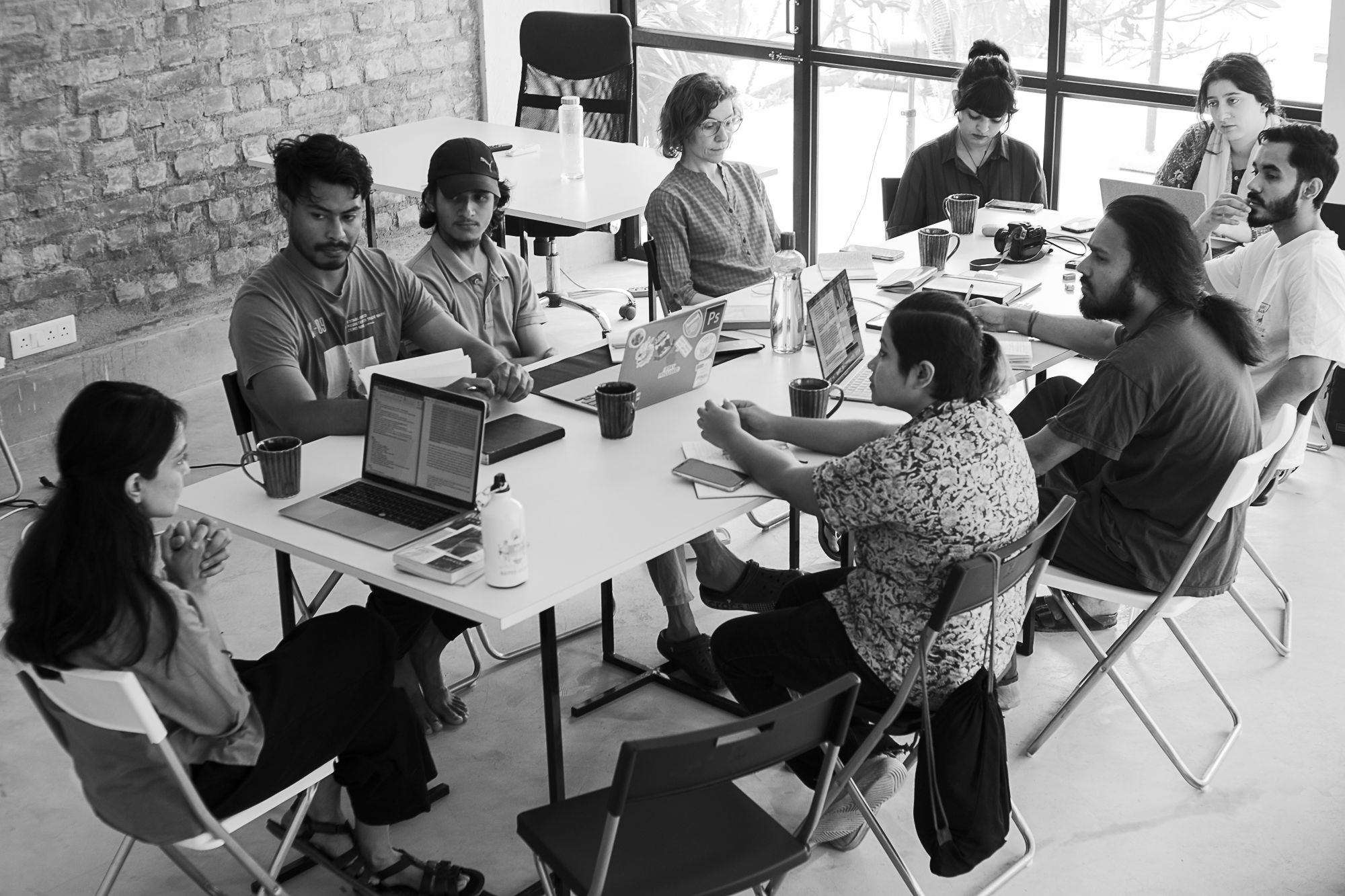



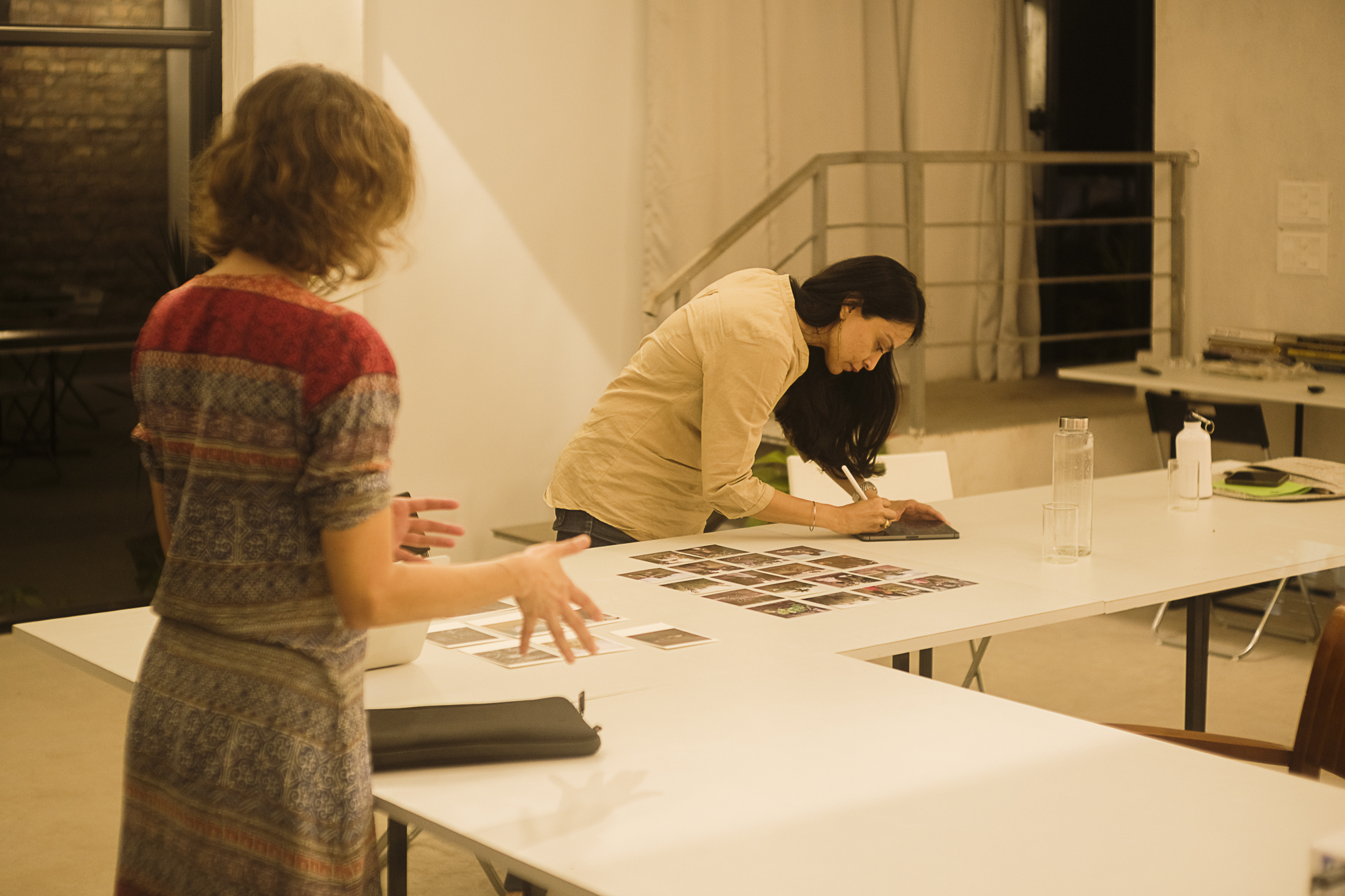
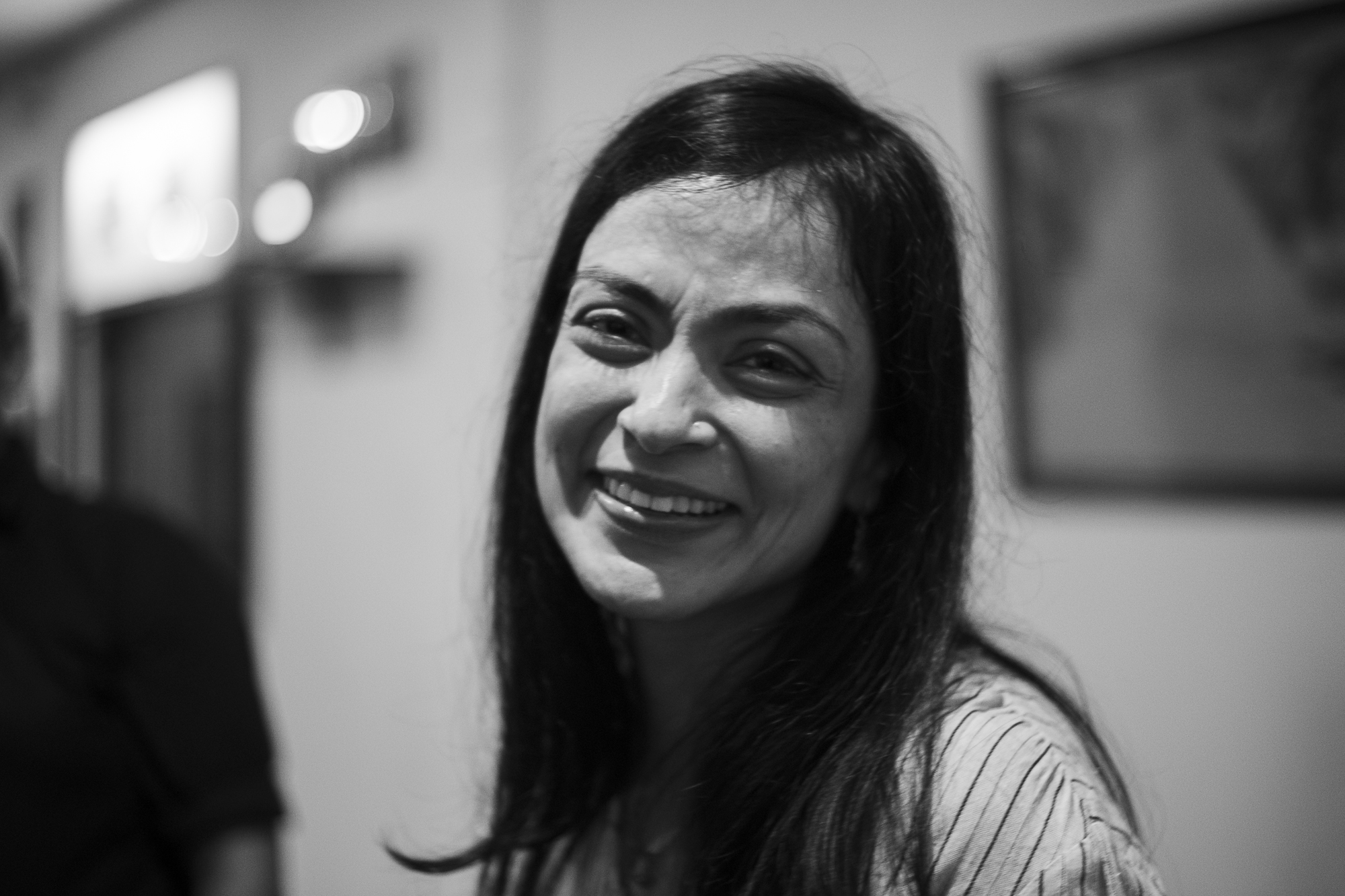
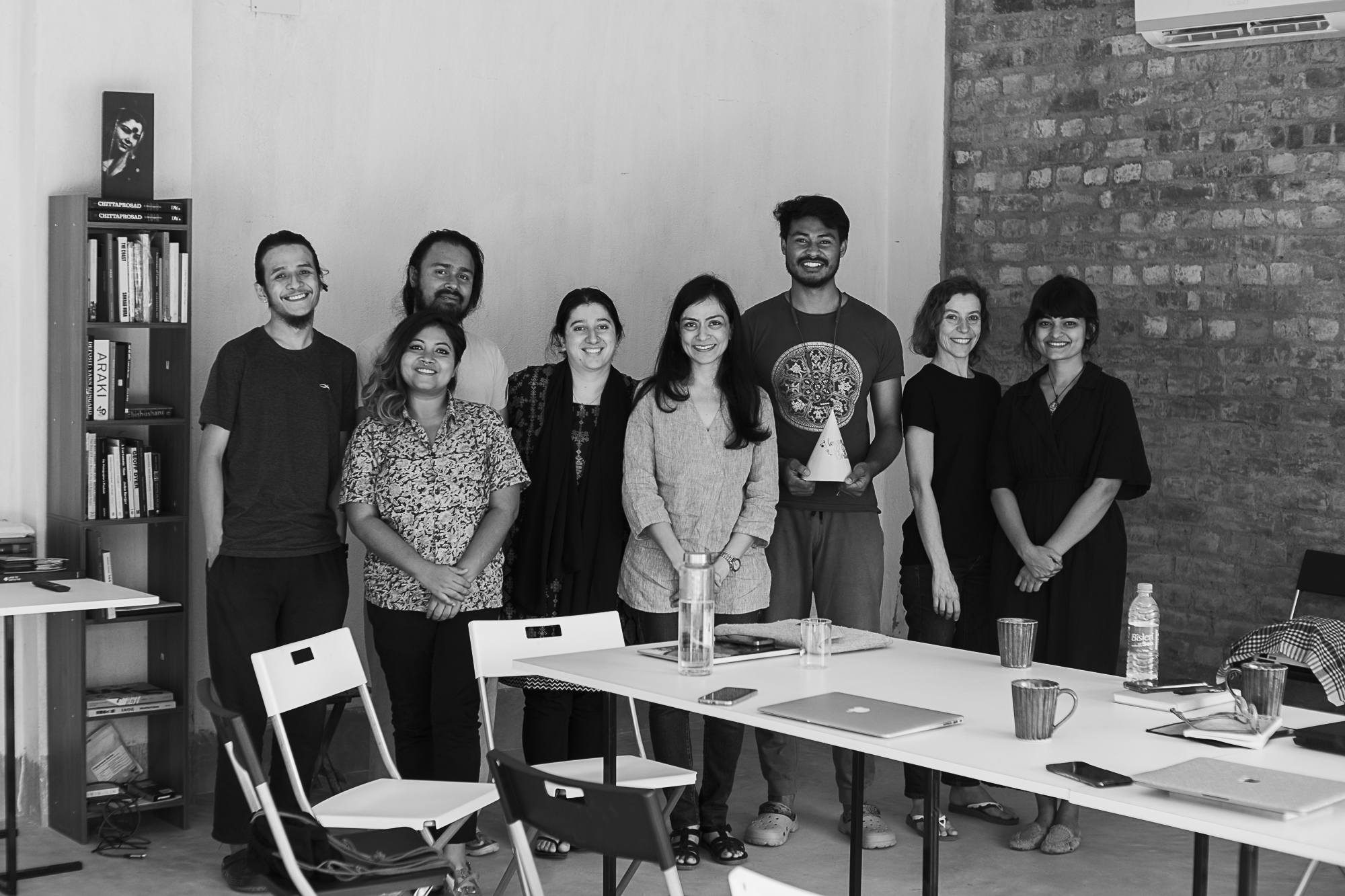
We all know the story of how Alice fell down the rabbit hole. It was freefall at first until she landed to then discover the long hallway with many closed doors. In the journey that followed, she had to be big and small, kind and fierce, foolish and wise. Our first session with Veerangana was about finding the golden key; connecting the dots while accepting that not all dots form straight lines, crooked and broke lines are welcome too. We were all Alice that day, falling down our own rabbit holes.
The week that followed was no less than an adventure, we attended the Experimenter Curators Hub in Kolkata. Of the many things that made these two days special, what stood out the most was how in these 3 weeks, ‘we’ had collectively become ‘us’, how simple it had been to look and look out for each other in a crowd. While it was amazing to peek into the community it was also deeply comforting t know the side we are on was kind, open and respectful. Everybody had a place at the table.
Writing in many ways is a lot like photography, it gives us permission to articulate the world as we see it, the story is our frame, the words we choose decide our focus, it relies on showing than telling and most importantly it starts from a quiet intimate space- Veerangana substantiated this idea by creating tha space for us- allowing us to hear ourselves while also feeling heard.
Our final session ended with each of us reading our artist statements aloud. It was perhaps in this moment that it became clear that we had to be small before big, foolish before wise and our kindnes came with its own ferocity. It was in owning our story that we each claimed our own version of wonderland.
Staging Situations
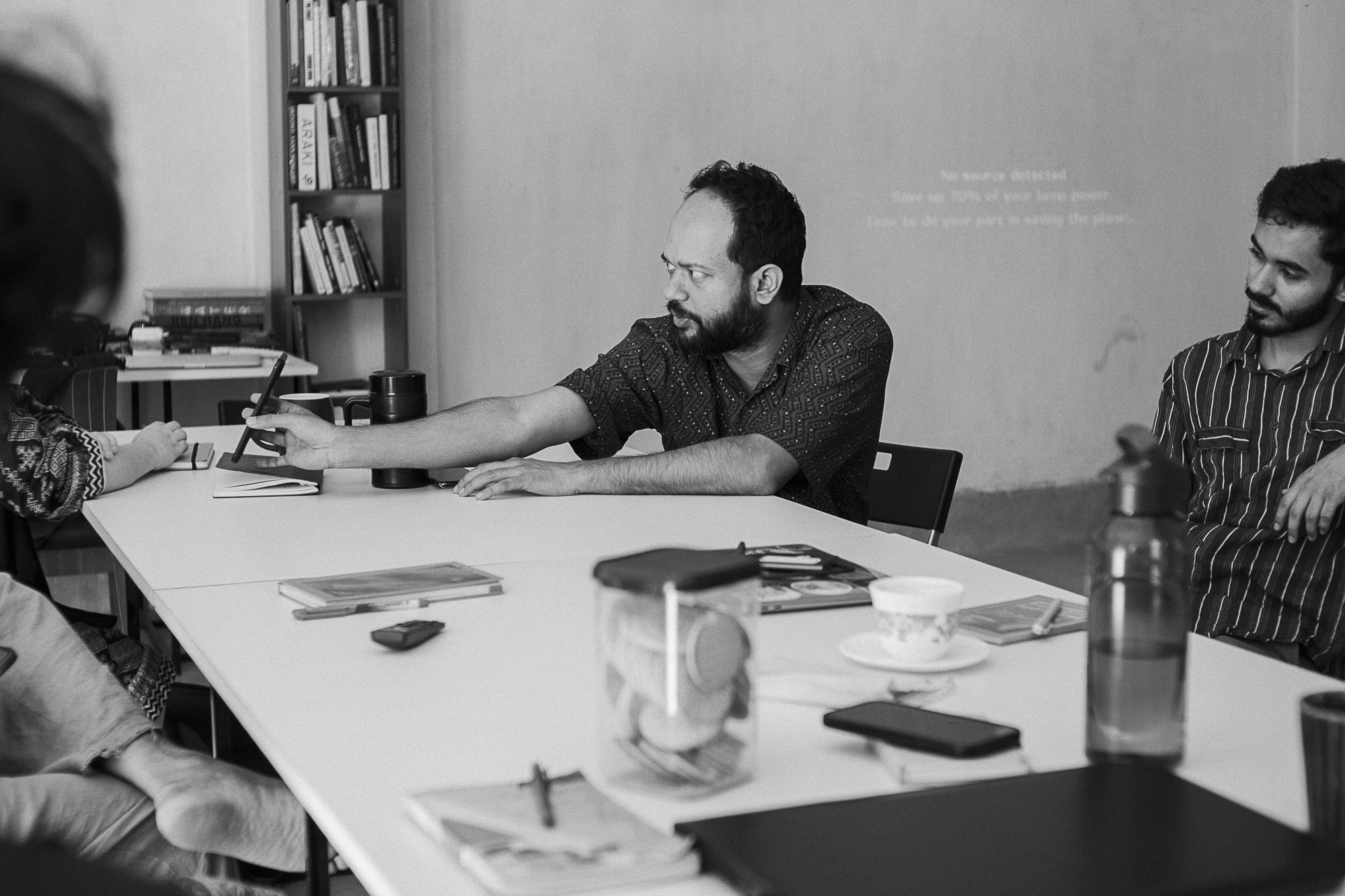
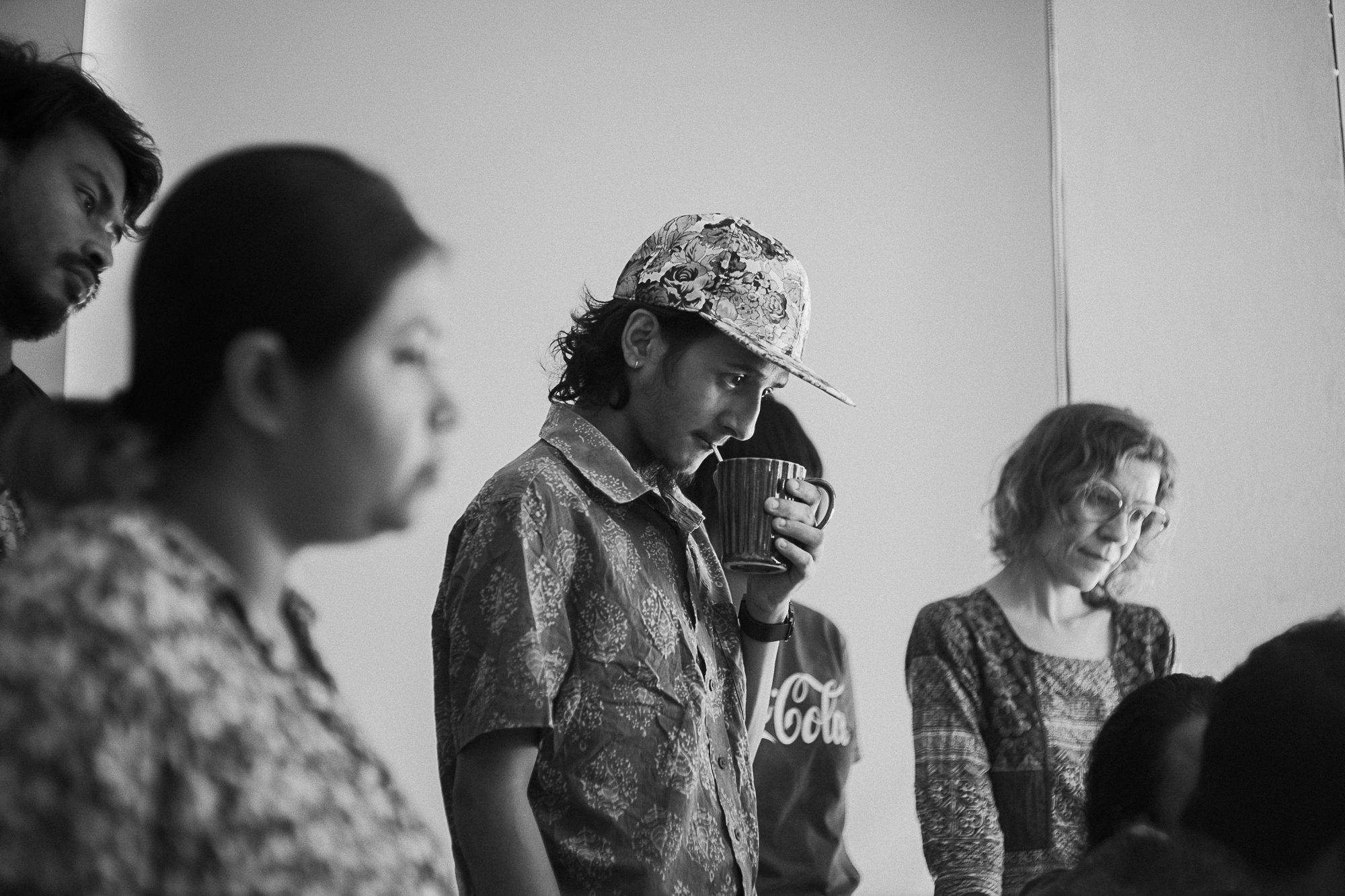
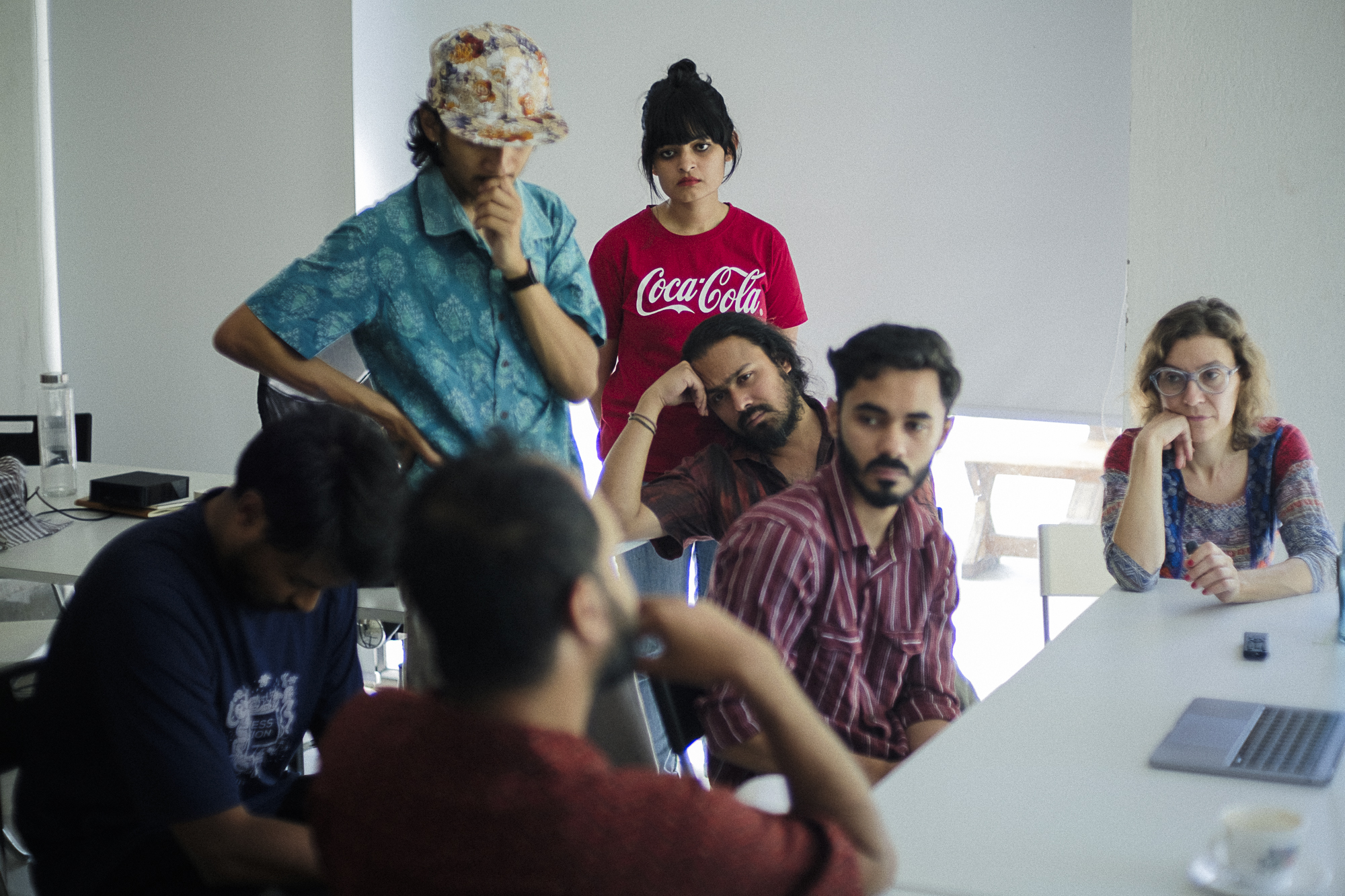
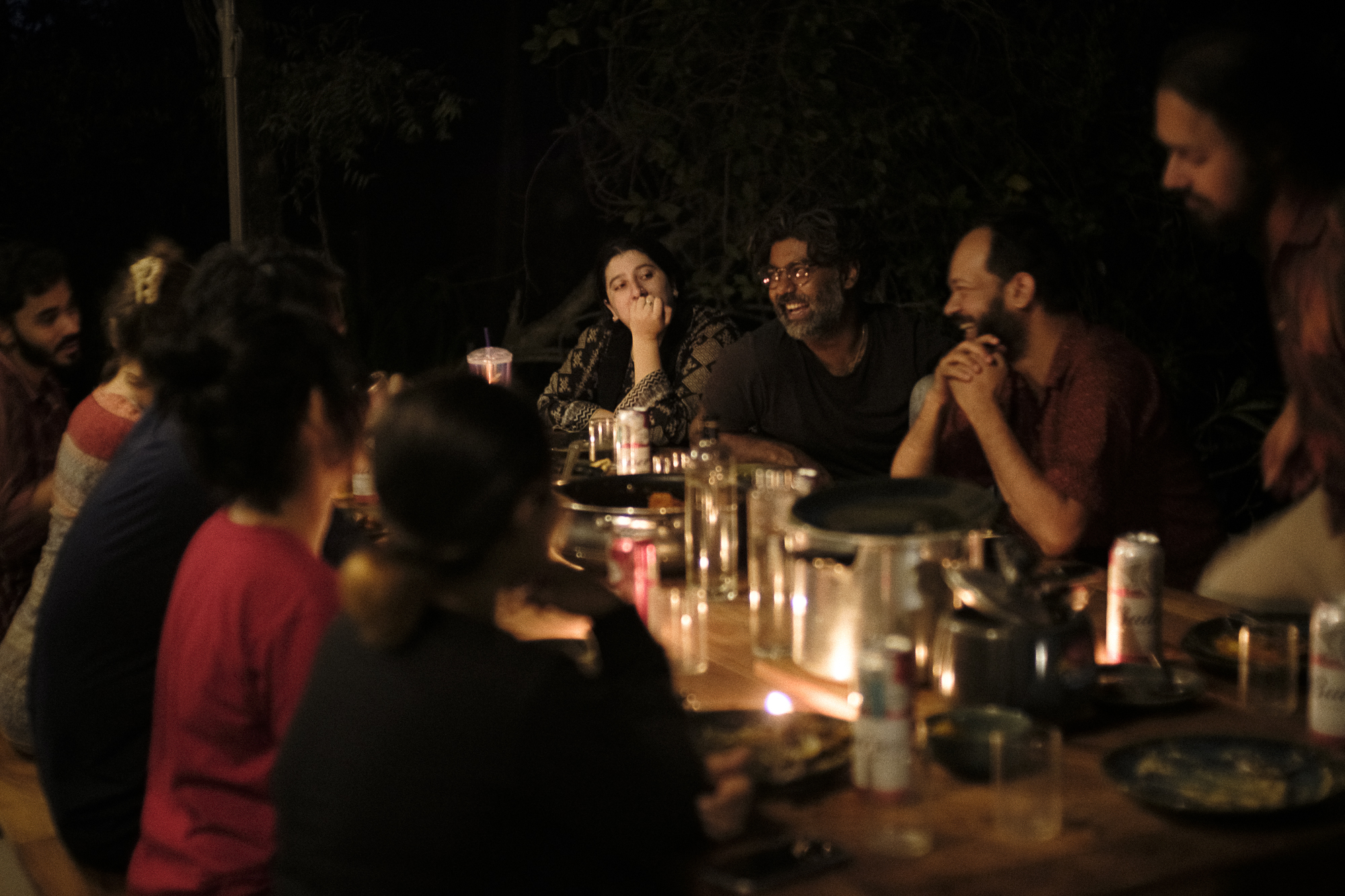

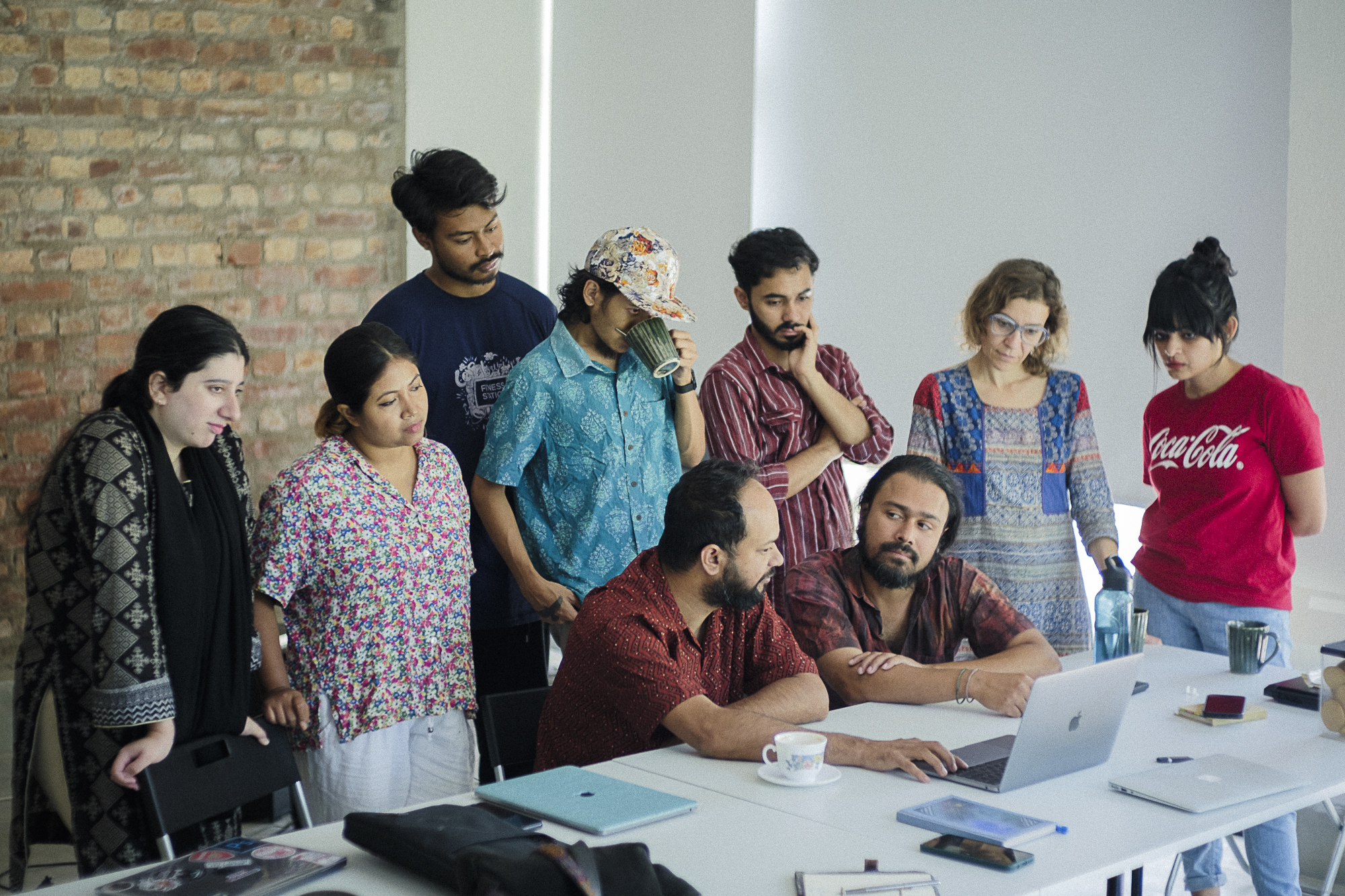
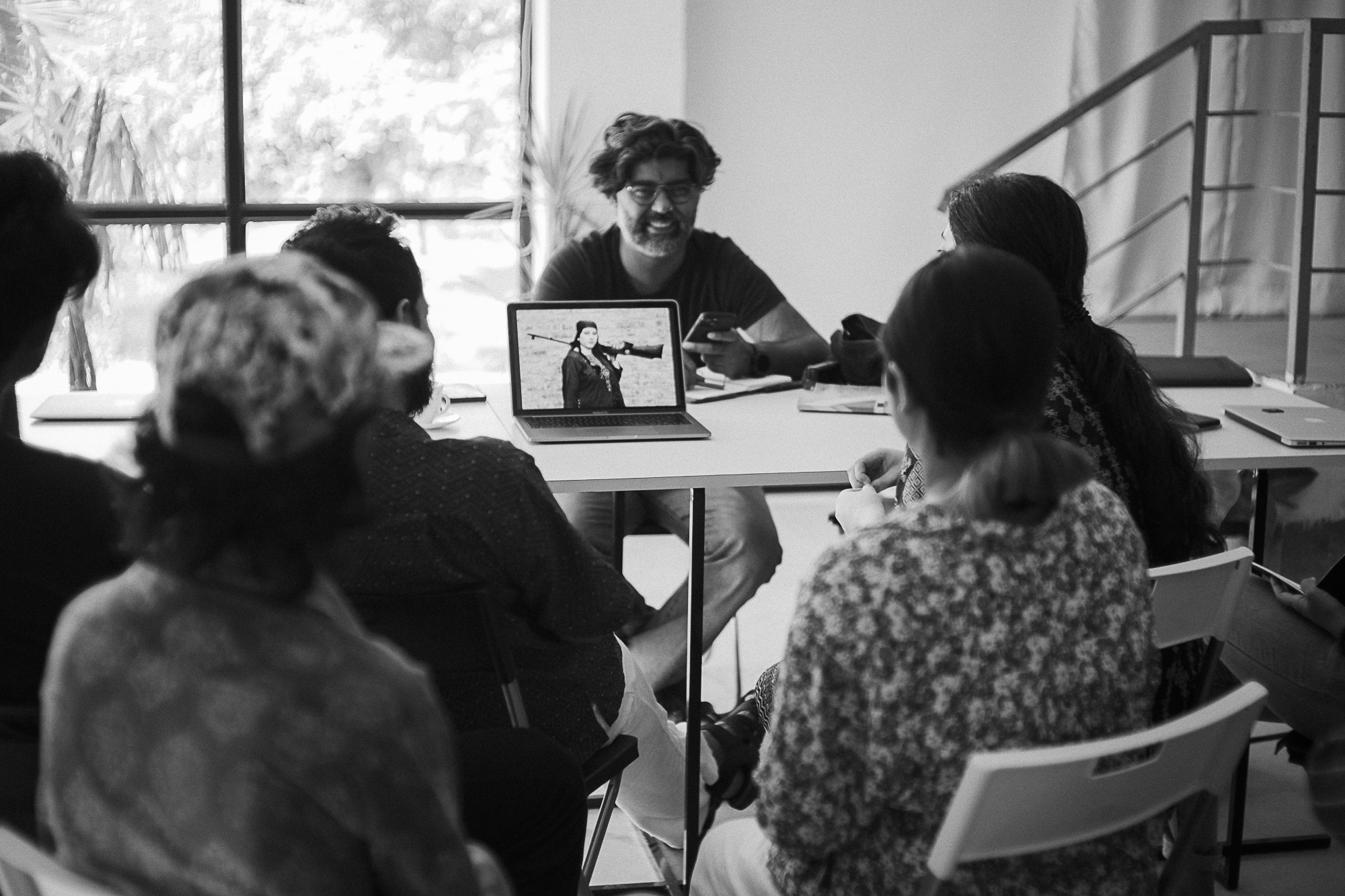

“Less is more,” was the first of the many lessons that followed in our week with Wasifbhai. Staged photography was the subject and our assignment was simple- to produce a single staged photograph.
Through this week we learnt that to stage a photograph is to observe and fully understand, to translate and carefully construct, to be mindful and sensitive. Most importantly, to stage a photograph is to deliberate before we create. What stood out the most in this assignment was the process. Everything was collective, from how we helped one another to the people who participated and everyone around who cheered us on. It was as if many photographs came together to create that single image.
By the end of this, we realized that simplicity comes from decoding what is complicated. Like fixing a Rubik’s cube, it takes patience, logic and several failed attempts. It is to sieve the idea from the clutter that surrounds it, six faces - six colours. Genius lies here. Wasifbhai’s eccentricity and sharp wit made our sessions memorable like bookmarks to the lessons he taught. Bookmarks that held the weight of a chapter. Placing our photographs within photobooks as markers of growth would be one such chapter that we would remember for a long time to come. In our lives we come across only a handful of people who believe in an idea completely until they represent it. It reflects in the little and the big things they do and very often they become the teachers who teach even when they are not teaching.
On Road, Off Road
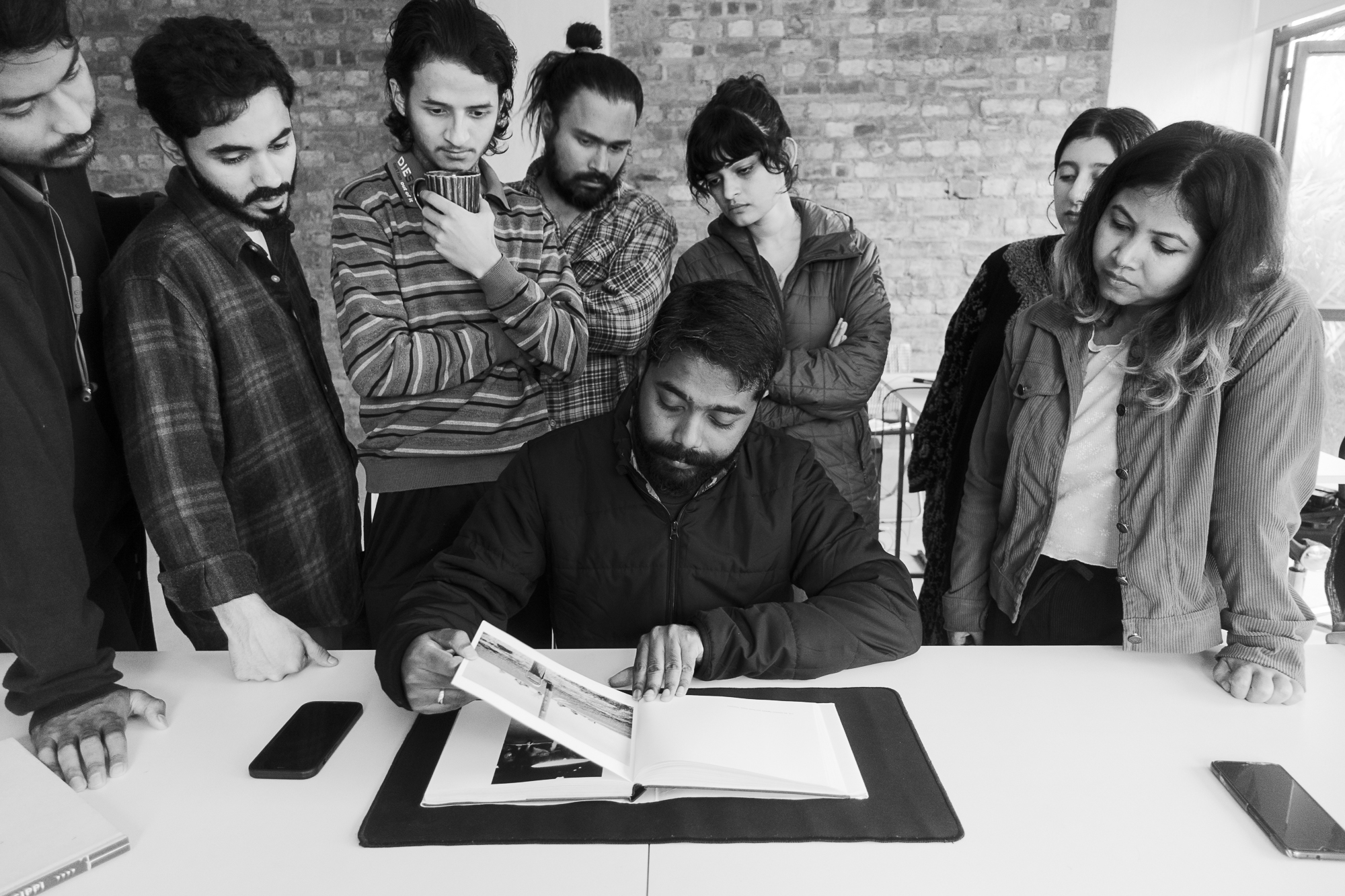
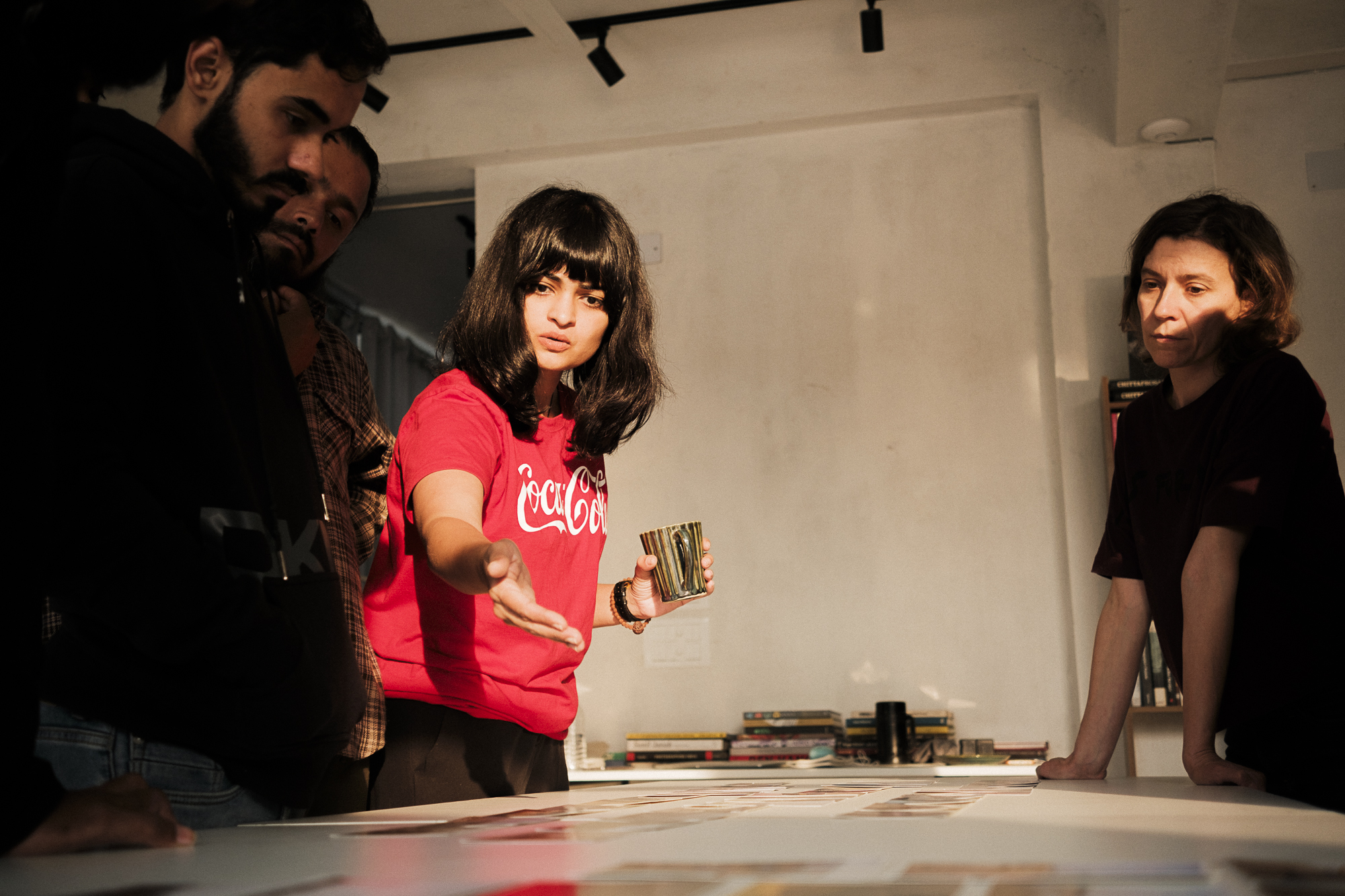
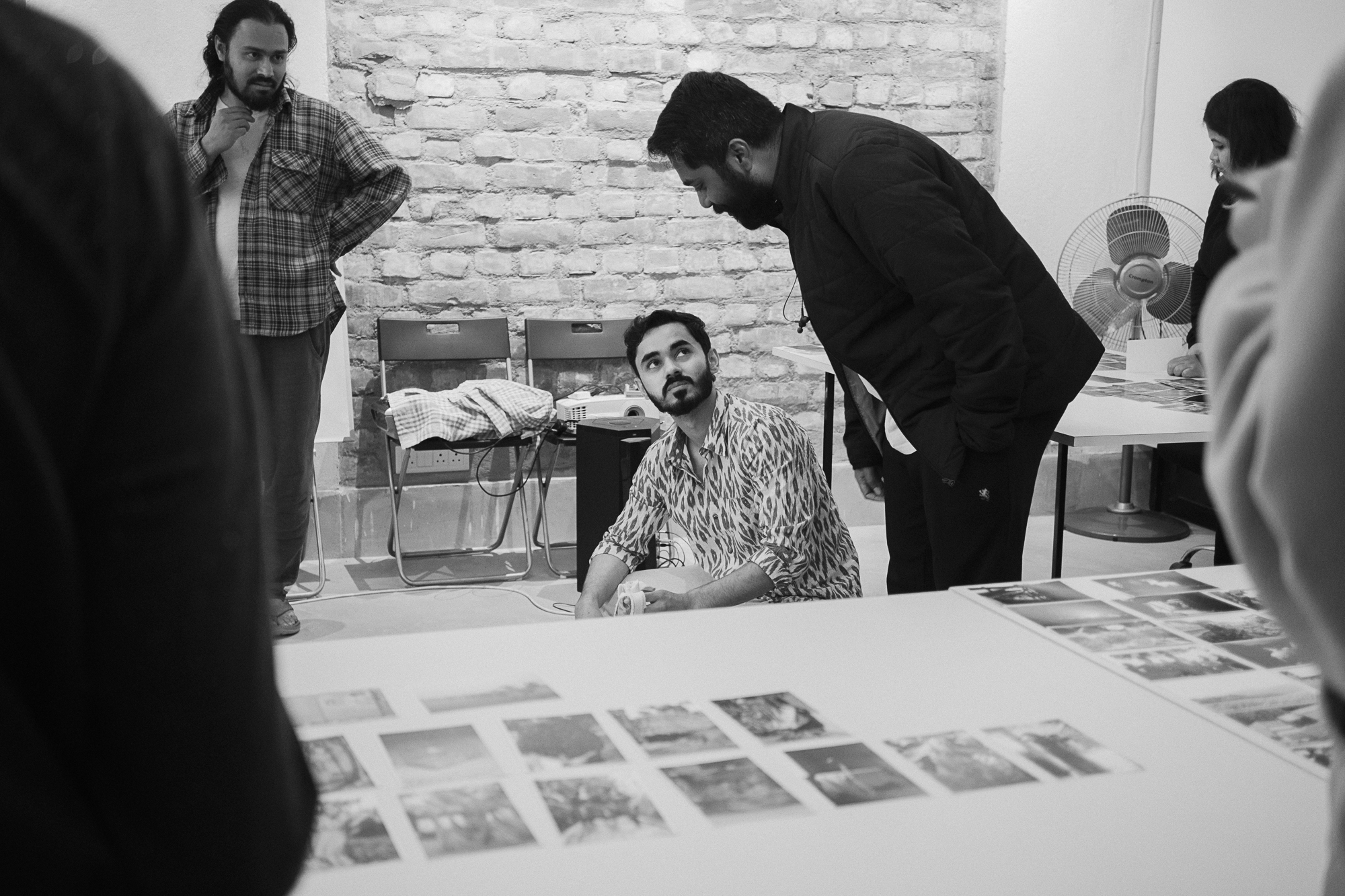
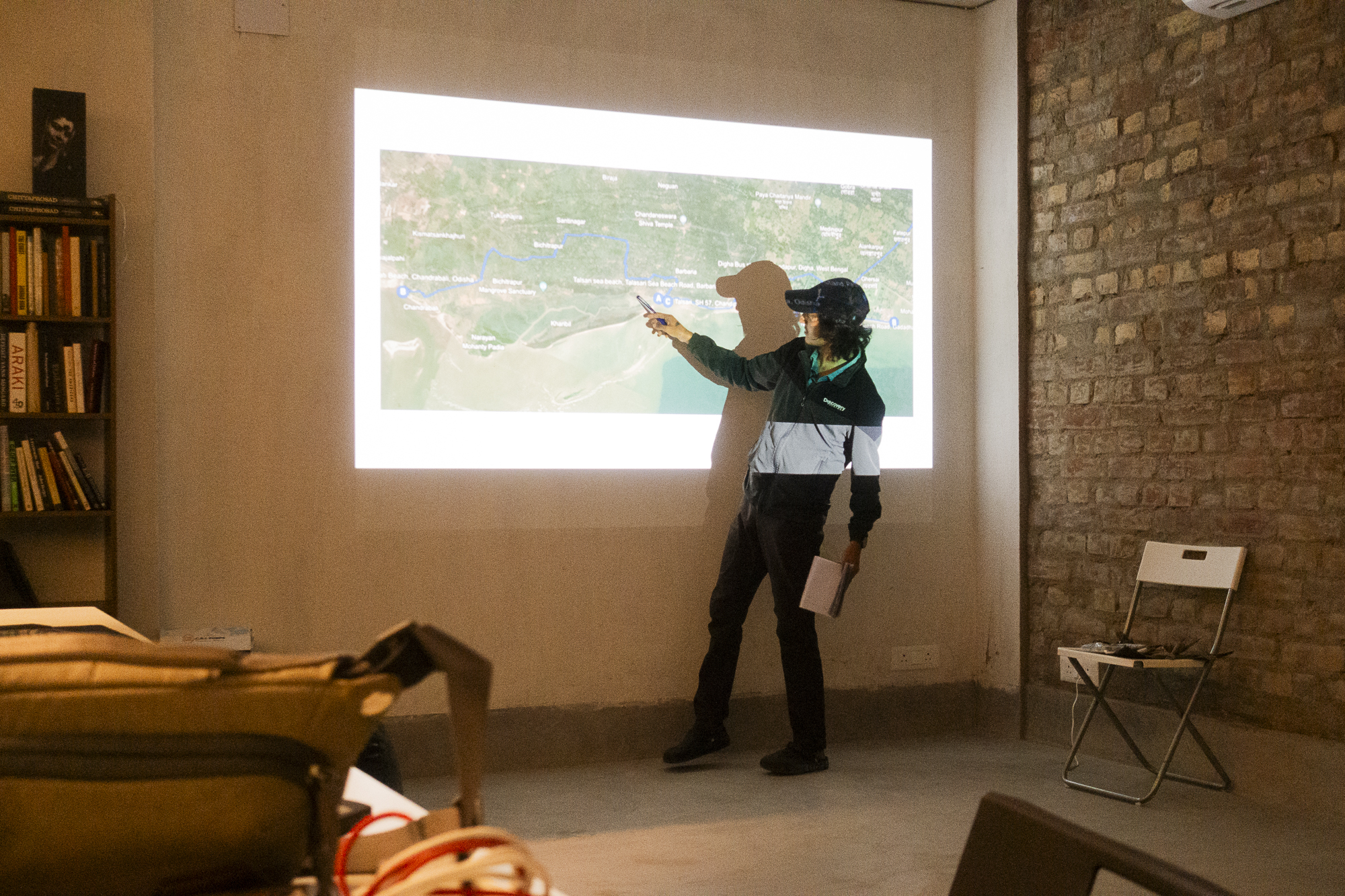
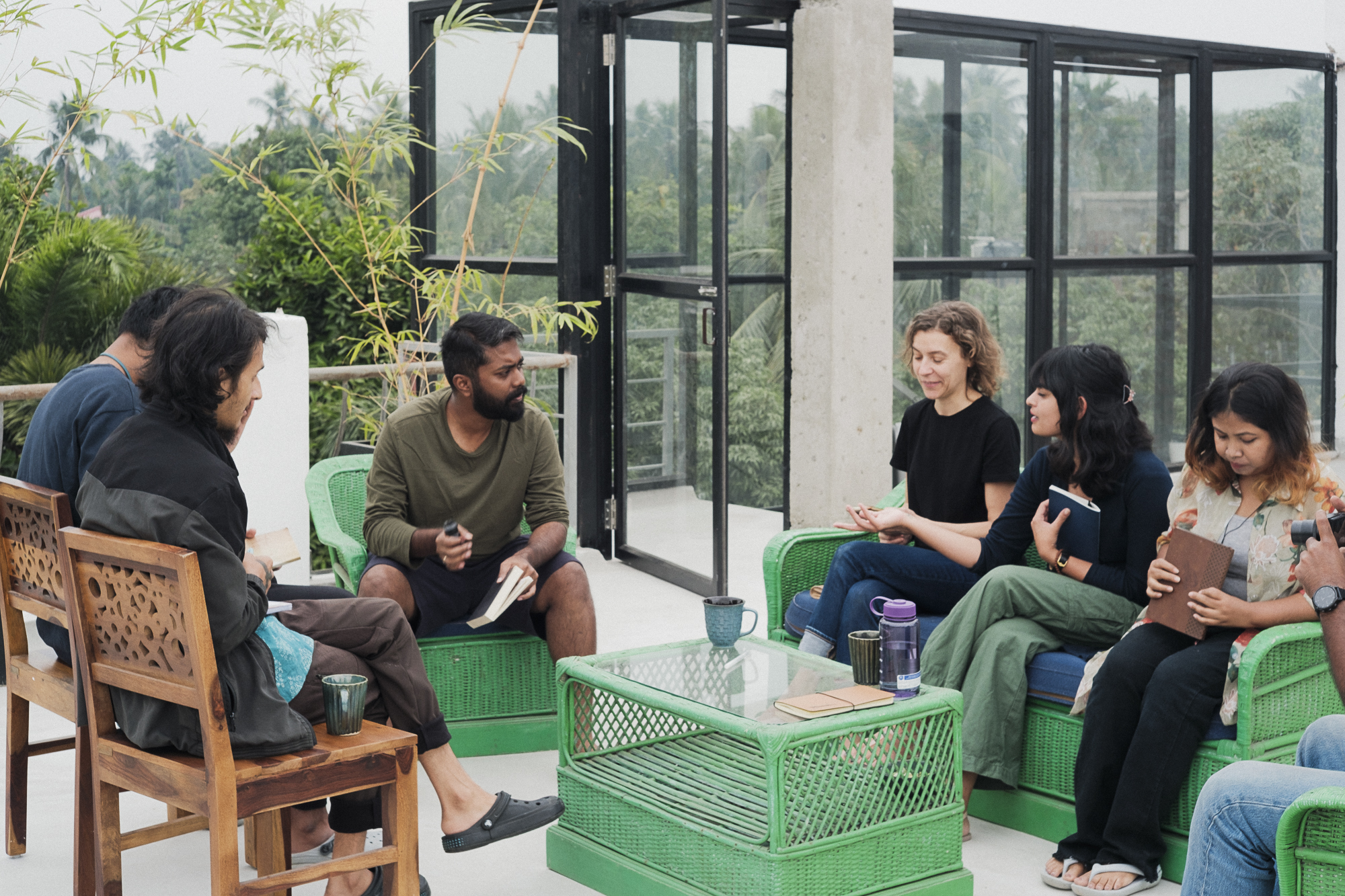

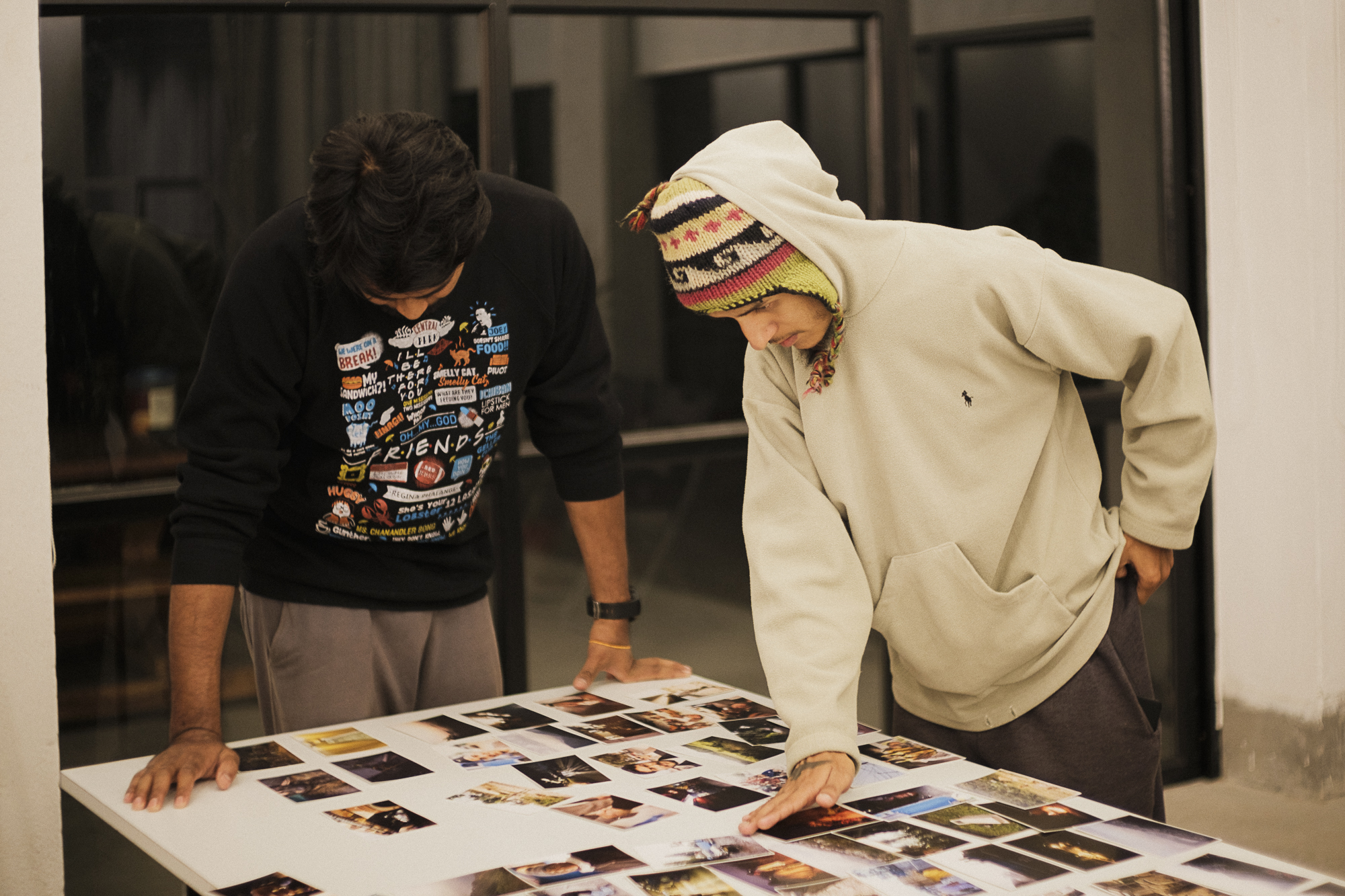

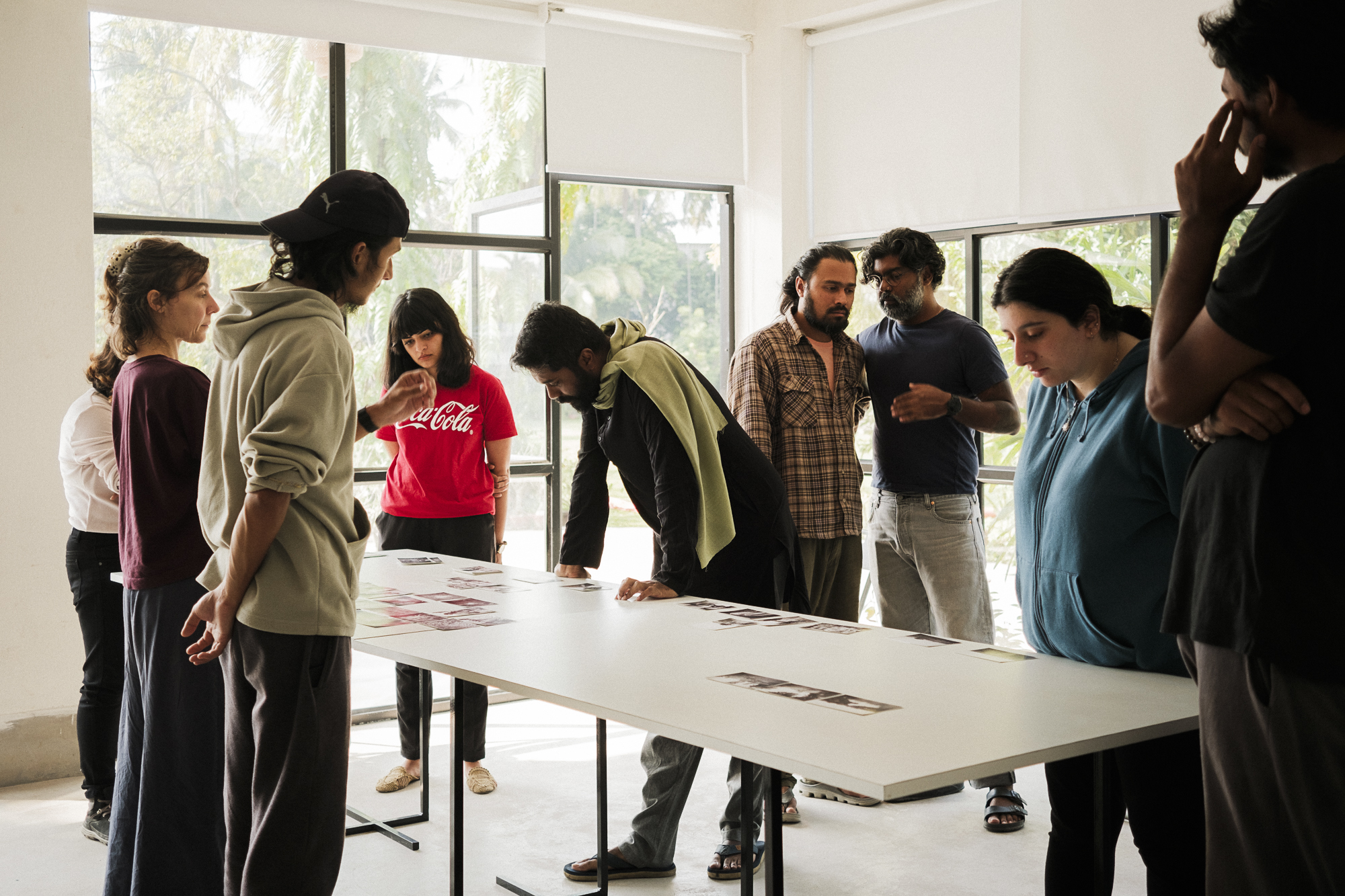
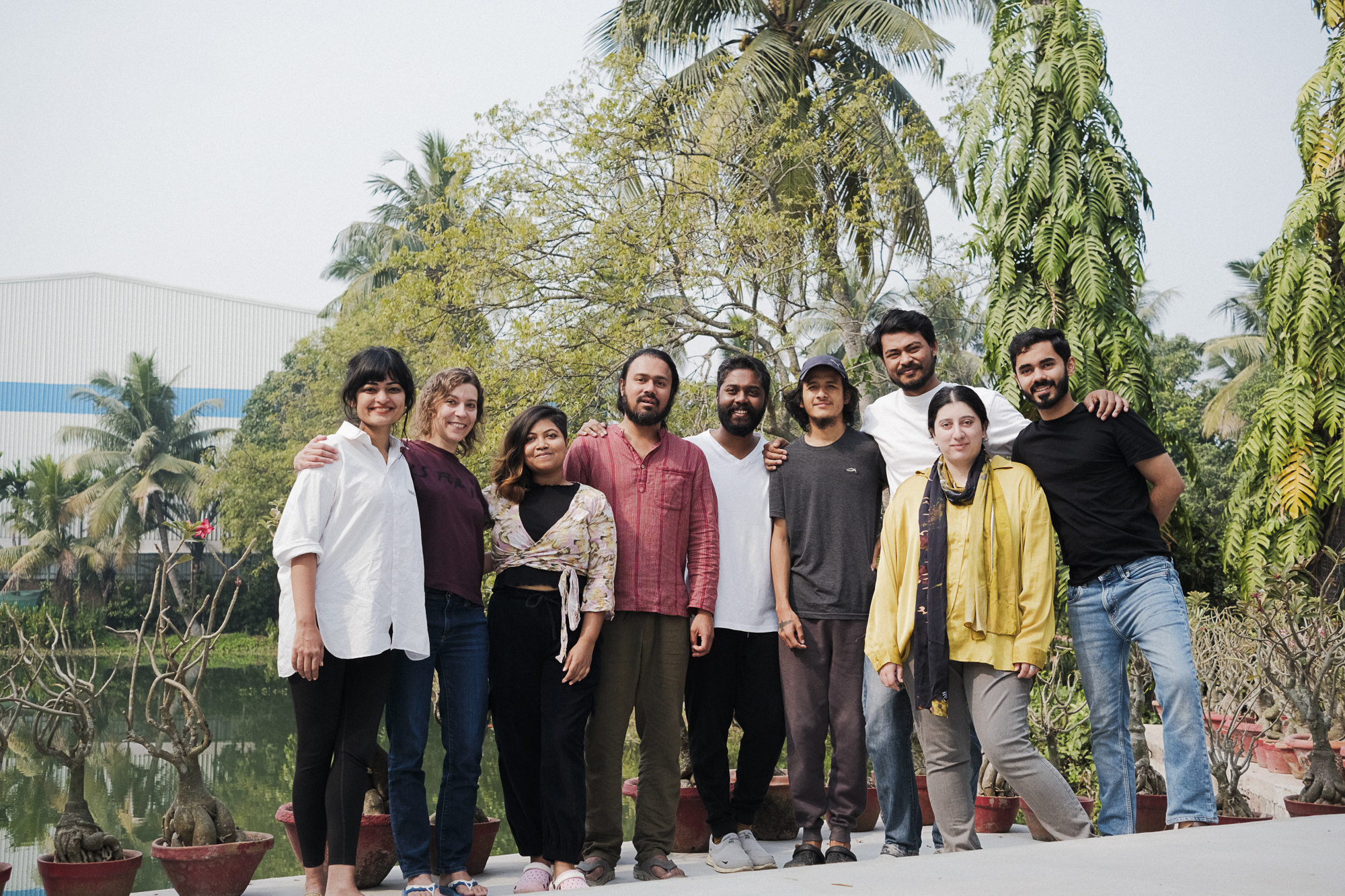
It all really began on the day of our interview. Mics adjusted, double checked. All of us were nervous, some of us visibly so. It was here that we each had our introduction to Sarker Protick - our first mentor, the one we’d know the longest.
Protickbhai’s sessions are remembered with photographs, conversation and music; the one we most enjoyed was presenting the photographers he handpicked for each of us. We studied the intimate storytelling style of William Eugene Smith, the precision with which the Bechers worked, Sugimoto’s masterful technique of exploring concept, to Duane Michals’s use of metaphors, while Stephen Gill exercised lack of control. Everyone had a distinct style, process and reason. The stories of these artists also narrated how they view their medium, the statements they made through the photographs they take. Within this assignment we found relatability and inspiration in their work but also a tiny glimmer of the far distance he could see us go. He took the time to understand each of us independently-how we see the world to understand why our cameras saw the same way.
From our first day at the Academy to our final screening with Safarnama, we came together as the team he sought - perhaps from the same interview. In these two months, he watched us navigate through his carefully designed programme, witnessed our highs and lows and for all the moments that mattered, there was always his camera – ready to take a photograph. Resting Academy soon became that safe place where our weaknesses were never too weak to fix and our strengths could be strengthened further.
Teachers teach you while mentors change you. There are few who do both and fewer who do so with kindness, empathy and joy. They have the capacity to see who we are and within that the possibilities of who we could be. As we grow older, they are the teachers we remember in great detail- like looking back at a photograph.
Safarnama
25 Years of Pathshala
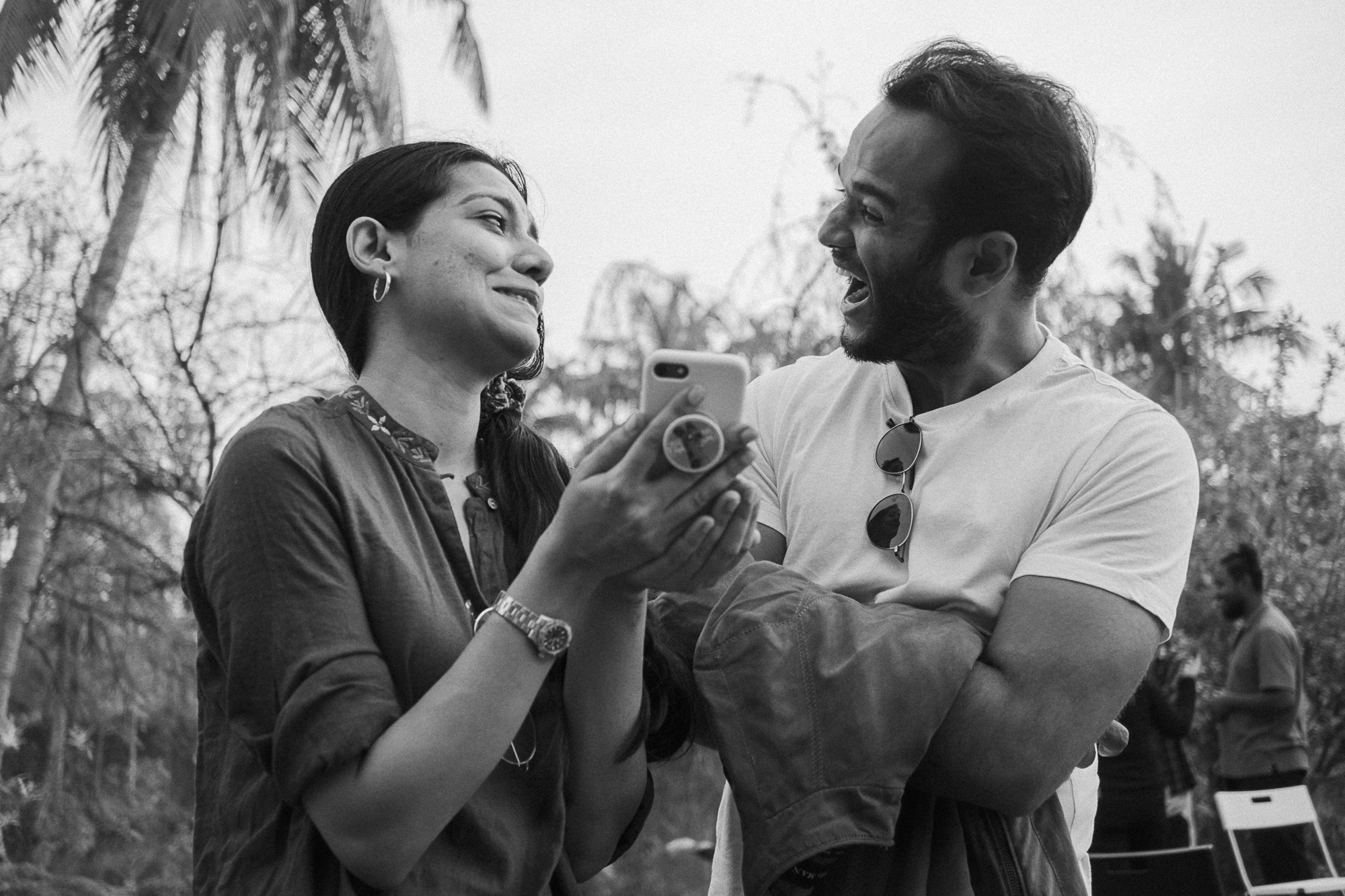



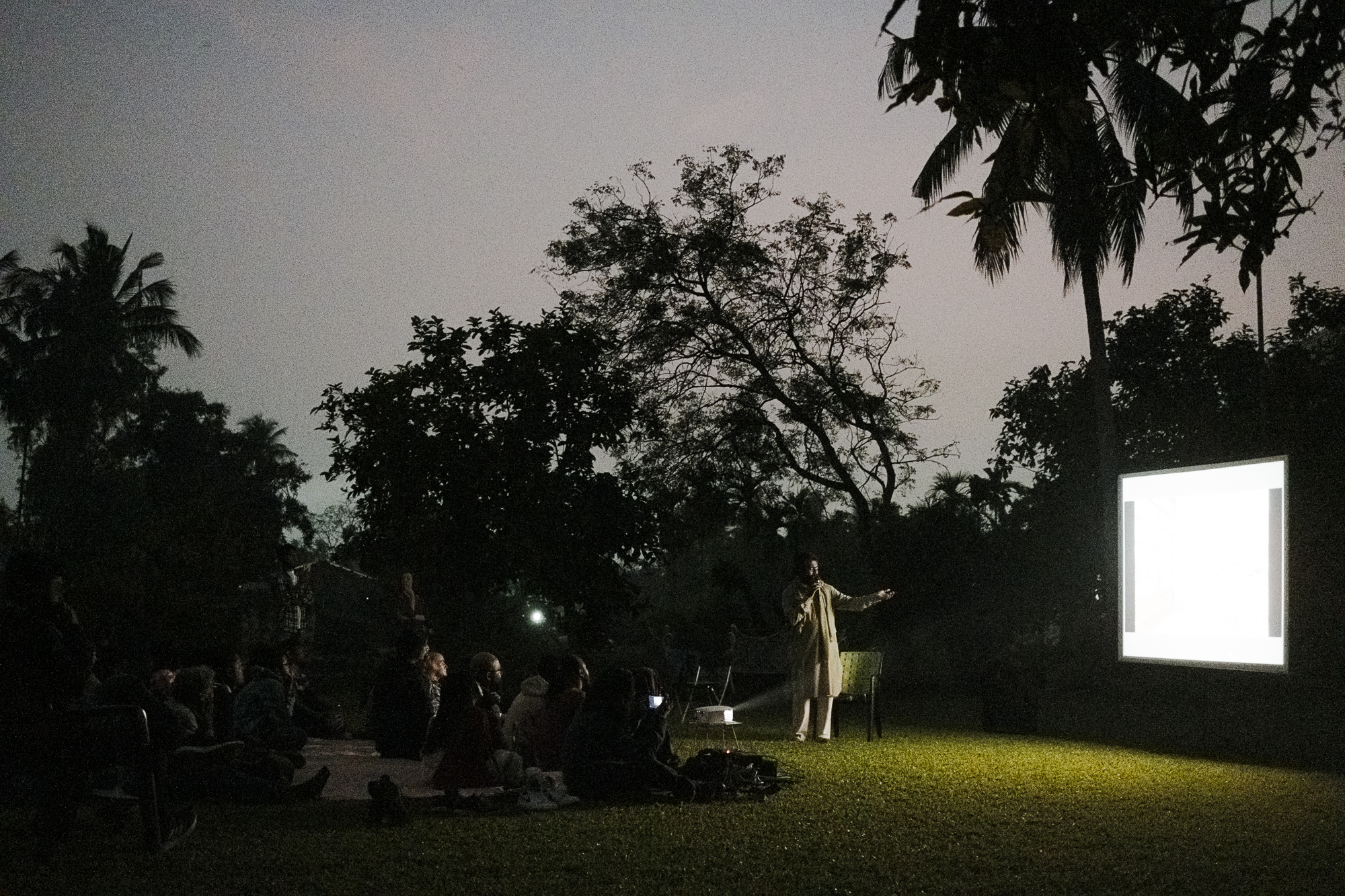



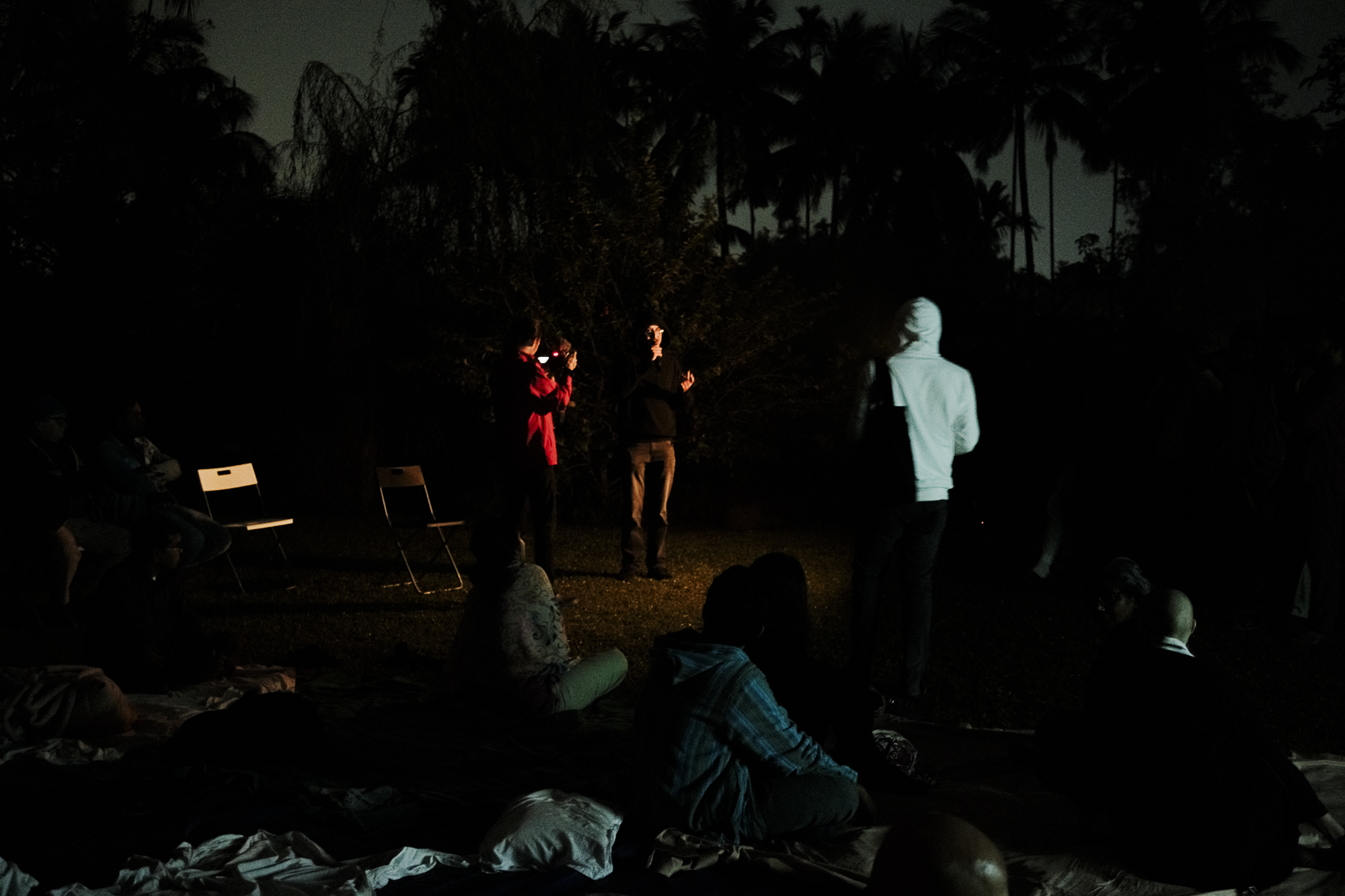


The journey of a Dream is one that sees many roads. Roads of hope and highways of resilience. Along the way, there are people whose maps lead to the same distance. We also come across milestones that become mirages, to come so far to only know we must go further. It propels us to chart a new course, make trails that widen as more people join. Taking action and setting on this expedition is the hardest, to downsize what we’ve been carrying, to make space for everything we hope to find along the way.
Pathshala is the journey of one such Dream. From the metaphorical banyan tree, to a home and then a commendable institute-the campus has grown and continues to be a teacher in itself- its high ceilings, exposed walls and overarching windows is a gentle reminder to be humble, honest and to always look out. What we do decides who we become. As photographers, we see more than we scavenge, we appreciate before we create, we preserve to always remember. Every photograph is a testimony to that. What is also interesting about photography is that there are no empty gaps, there is always someone who sees what the other missed. While heirachy exists in a photograph, within its flat surface- the big and the small come together to complete the picture. Safarnama was a complete picture with all the people who came together to support and cheer us as we narrated the tales of our travel- an interplay of photographs, sound and written word.
The journey of a dream is continuous, once it begins there is no stopping. It starts with one person and grows with many people. It becomes bigger than us until we are no longer moving but it’s the dream that carries us forward.
Reading the stitch: introduction to book making






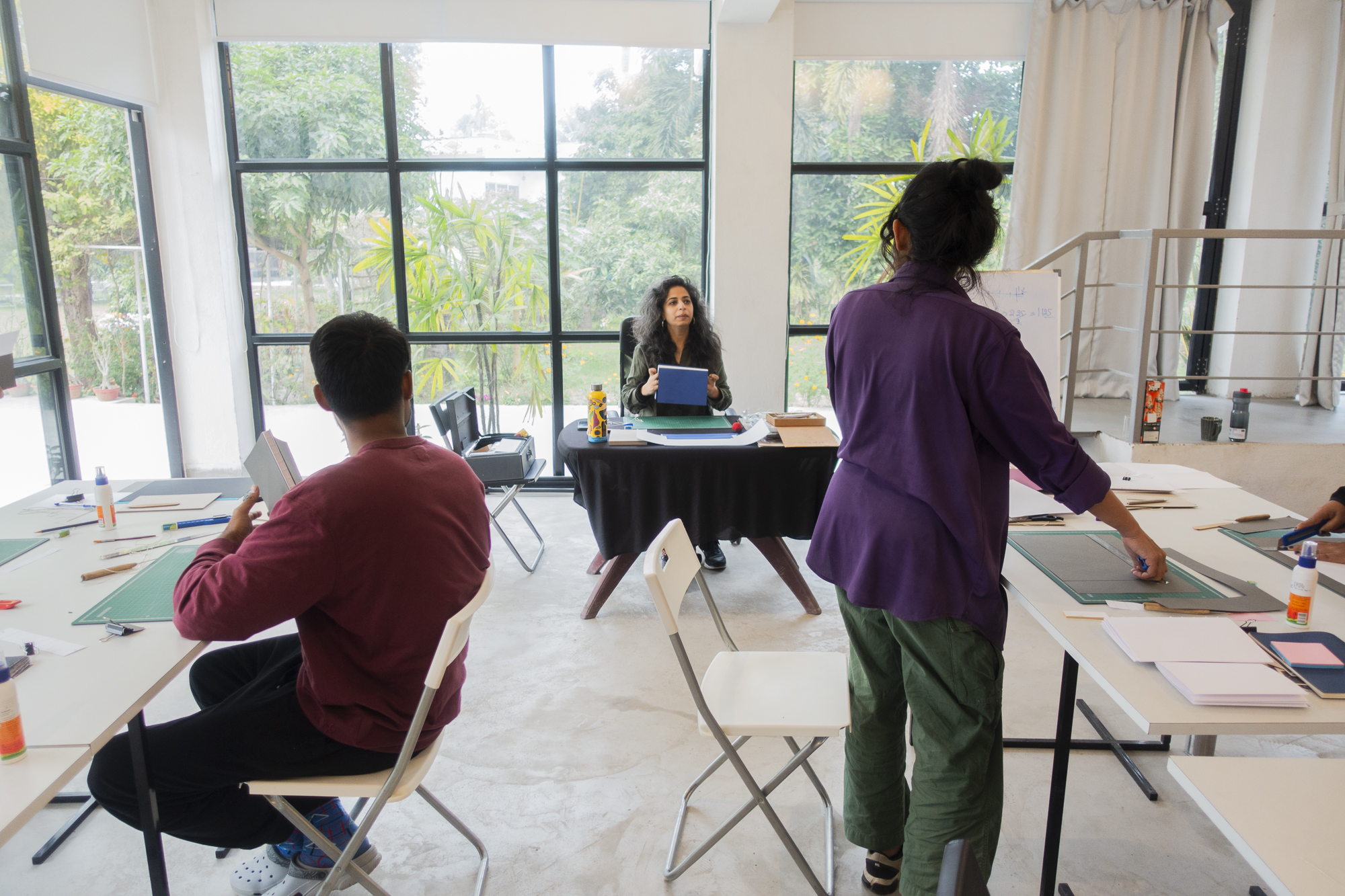



Winter had begun and Anandi was nestled in the fog. Our holidays were over and we watched as each one made their way back to the Academy- in time for our next mentor. Our tools for the week changed to Awls, bone folders, needles and threads and our medium was paper and photographs. As we settled into our stations and folded our first signature- we knew this was a matter of preparation, patience and precision.
Anshika’s sessions were about learning the nuances of storytelling. It reflected in our first day where we were asked to introduce another resident; tell their story to the session after where we made edits from a jumble of all our photographs. The lesson was clear; Every story change with a different storyteller. A photograph is a silent dialogue; an observation, an opinion. The photographer, the invisible storyteller, often hiding behind the lens. Bookmaking is an intimate process of putting together these dialogues, establishing the characters and allowing the story to be clarified. Paper came in as punctuations- to pause within a page and to reveal within the folds- a photobook was allowed to be as expressive as its author.
In our week with Anshika there were many moments that were truly endearing- from barbeques by the campfire to conversations around the table. There was a comfort that let us bravely discuss our absurd ideas to the peaks and valleys within it. We were encouraged to be light hearted, explore the many ways to express and to wait until we are prepared to do so. Book-making as it turned out is about patience. Patience to sit with your work, patience to start over and patience to let the story be ready before we hurry to complete them.
